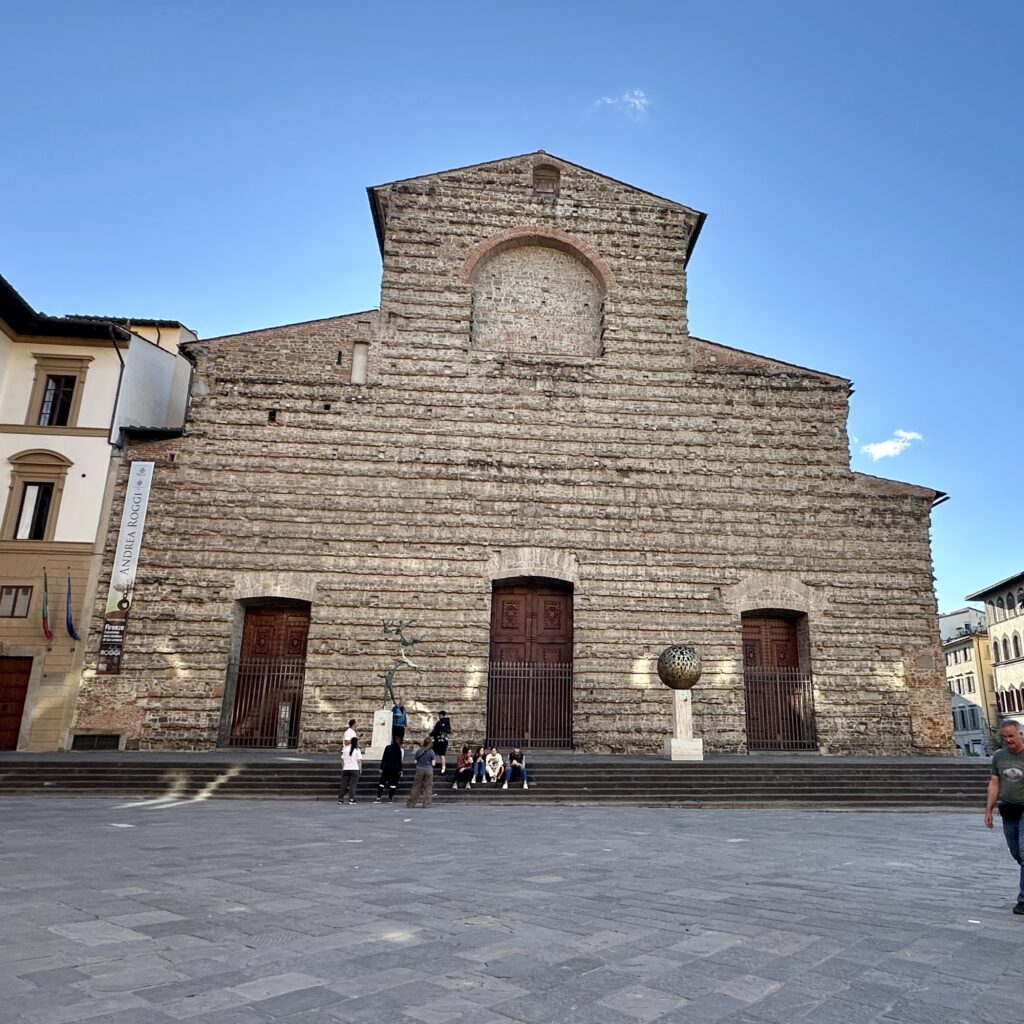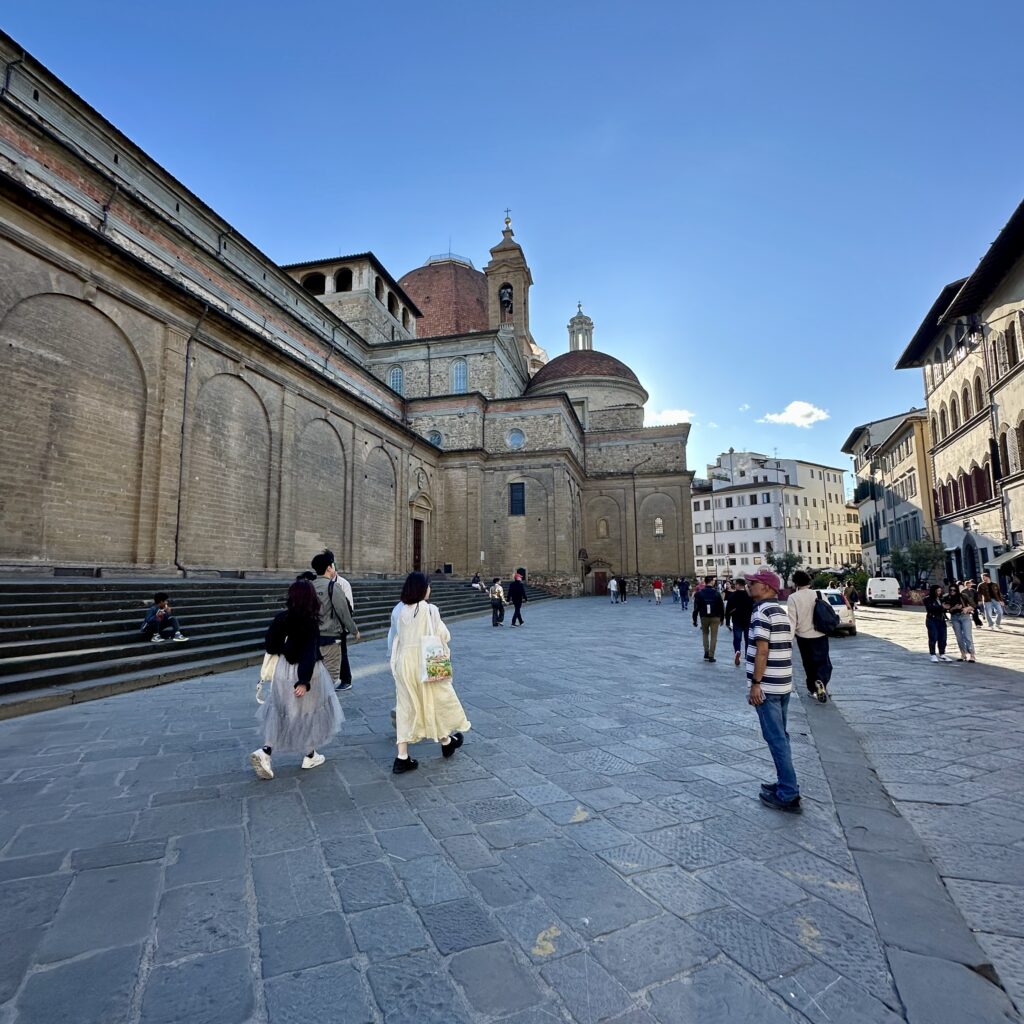4 nights in Airbnb (opposite Mercato del Porcellino)
We visited Florence for the first time in 2014 and again in 2025. Florence is considered to be the cradle of the Renaissance, boasting one of the oldest historic centres and some of the most famous museums in the world. Everything in Florence is spectacular and I consider myself lucky to have been able to visit this city twice. You will need 2-3 days to visit all the attractions on this page. Our Airbnb was within walking distance to most of the attractions mentioned on this page.
- Piazza della Signoria
- Ponte Vecchio
- Vassari Corridor
- Ufizi Gallery
- Galleria dell’Accademia (Accademia Gallery)
- Piazza della Repubblica
- Florence Cathedral Complex
- Pitti Palace
- Baboli Garden
- Michealangelo Plaza
- Porta San Niccolo or Tower of San Niccolo
- Loggia del Mercato Nuovo (Mercato del Porcellino)
- Churches of Florence
Piazza della Signoria – This plaza is a great starting point for exploring Florence’s rich history and art. The open square has a few important things to see like the Palazzo Vecchio, the Uffizi Gallery, Loggia dei Lanzi, statue of David etc.
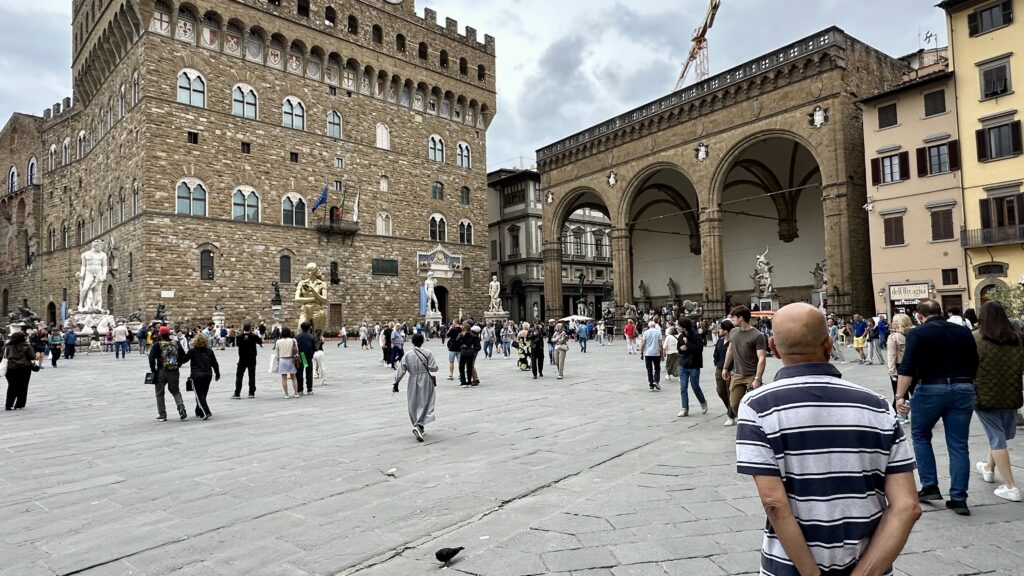
Piazza della Signoria, Loggia dei Lanzi – This is an open-air sculpture gallery containing Renaissance art. Some of the sculptures in the space include Hercules, Perseus, Achilles and the Medici lions.
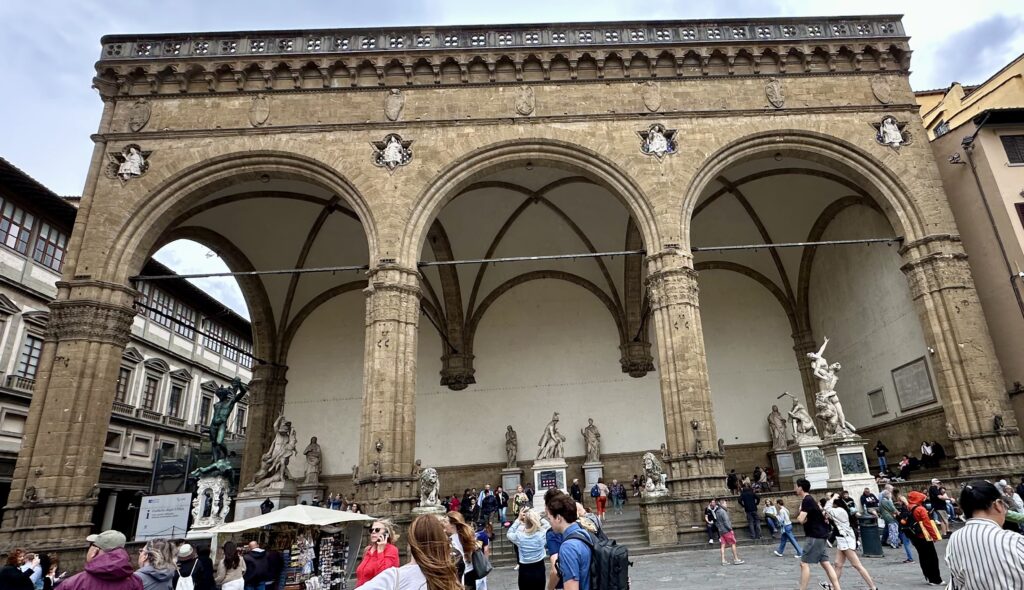
Piazza della Signoria, Statue of David – Sitting on the square, in front of Palazzo Vecchio, is a replica of Michelangelo’s statue of David. The original David statue was moved to Galleria dell’Accademia (Accademia Gallery) in 1873 to protect it from environmental damage and vandalism.
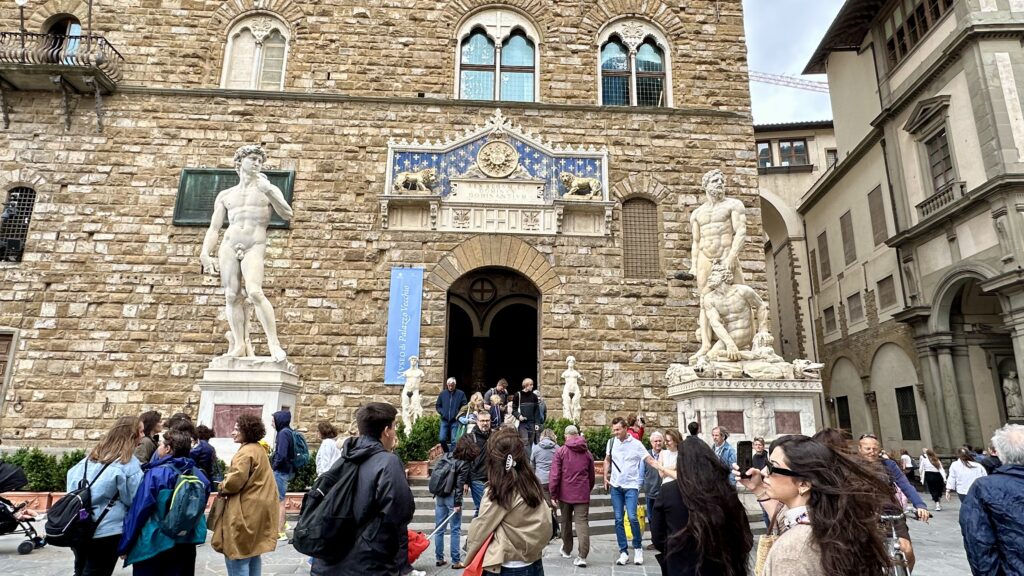
Piazza della Signoria, The Neptune Fountain – This fountain was commissioned by the Cosimo I de’ Medici in 1559 to celebrate the marriage of Francesco de’ Medici I to Grand Duchess Joanna of Austria. It was completed in 1574 and was recently restored. Cosimo I de’ Medici was the Duke of Florence from 1537-1569 and responsible for a vast number of architectural and artistic elements in Florence that still exist today.
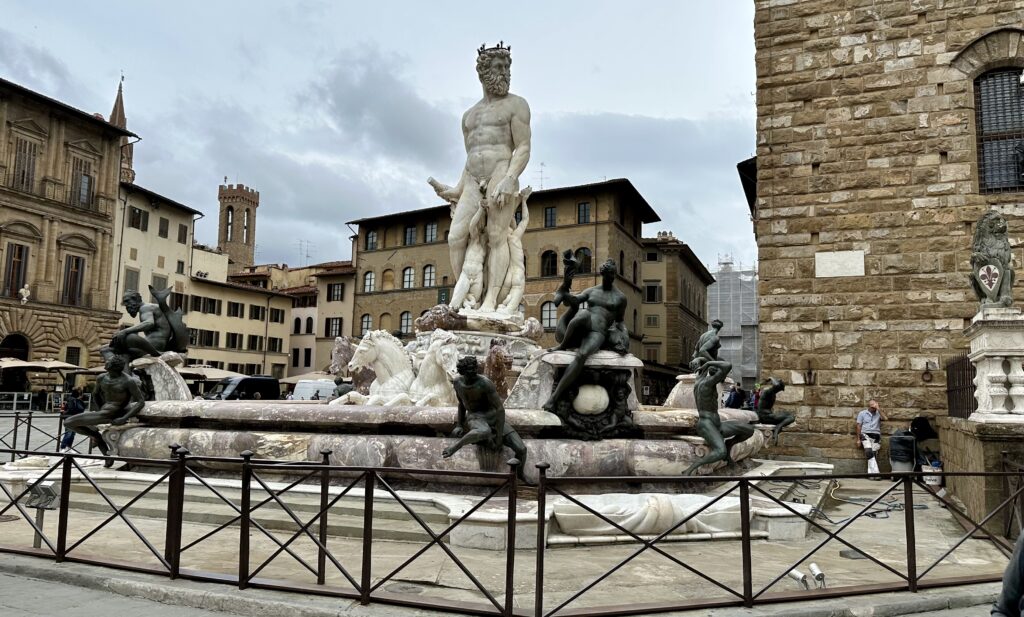
Piazza della Signoria, Palazzo Vecchio – Palazzo Vecchio was built in the form of a castle between 1299 and 1314. Its function was to become the residence and workplace of the officials of the republic, so it has several rooms, each with a unique personality. Today the palace houses both a museum and Florence’s town hall. One can also climb the palace’s 94m high tower, for one of the best views of Florence.
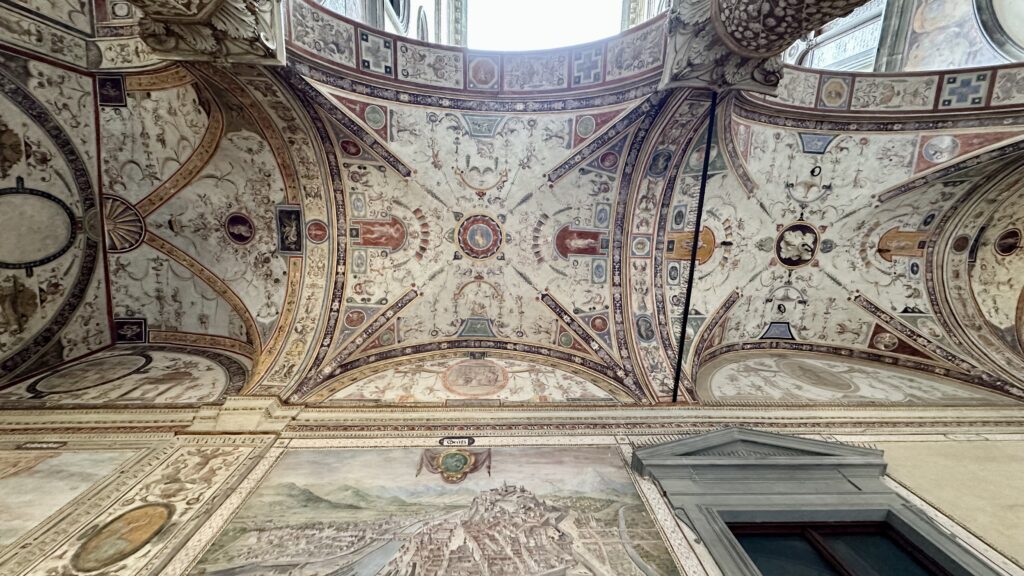
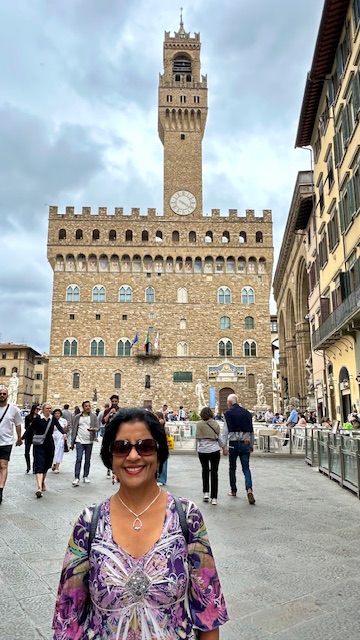
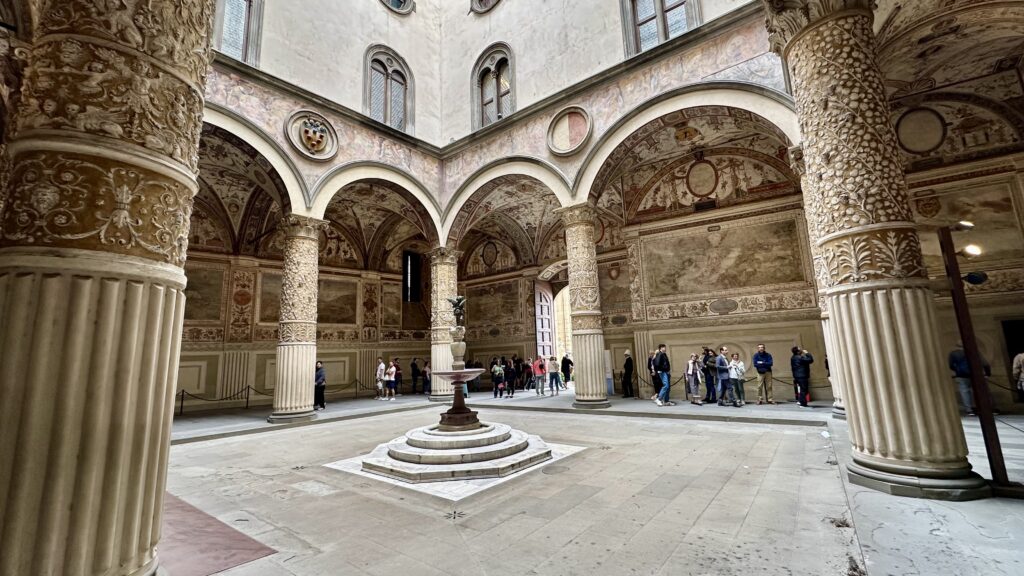
Tickets to visit the museum and tower (223 steps) can be purchased online.
Ponte Vecchio – which means “old bridge,” is a medieval stone bridge that spans the Arno River. This was the only bridge in Florence spared from destruction during World War II. Jewelry shops, art dealers, and shops selling souvenirs line this pedestrian bridge. Near the center of the bridge, you get a great view of Arno river in both directions. I walked over to one of the neighboring bridge (Ponte alle Grazie) to get a view of Ponte Vecchio.
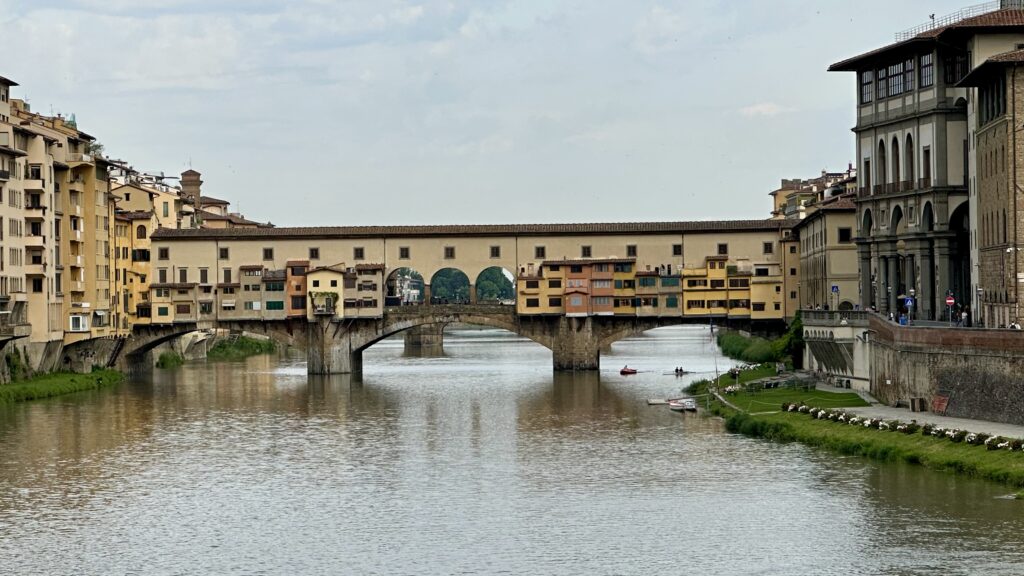
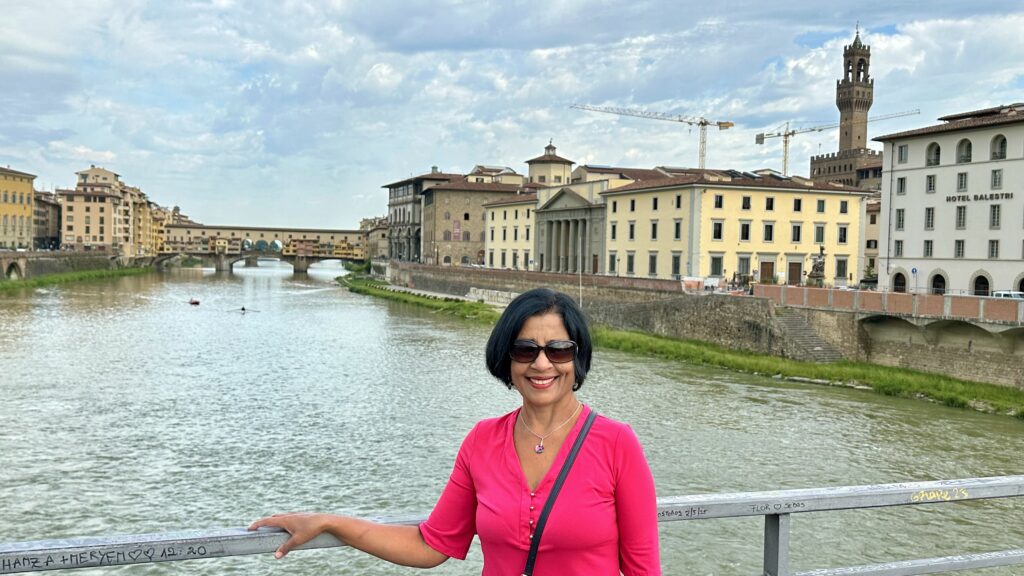
We walked on the Ponte Vecchio bridge back and forth a few times and enjoyed the view of the Arno river and took a few pictures on the bridge.
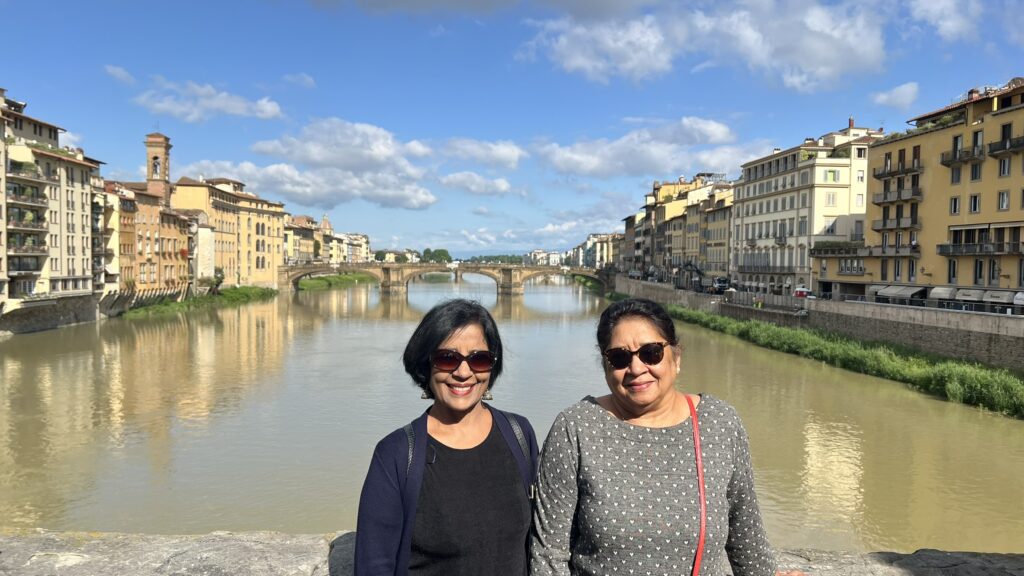
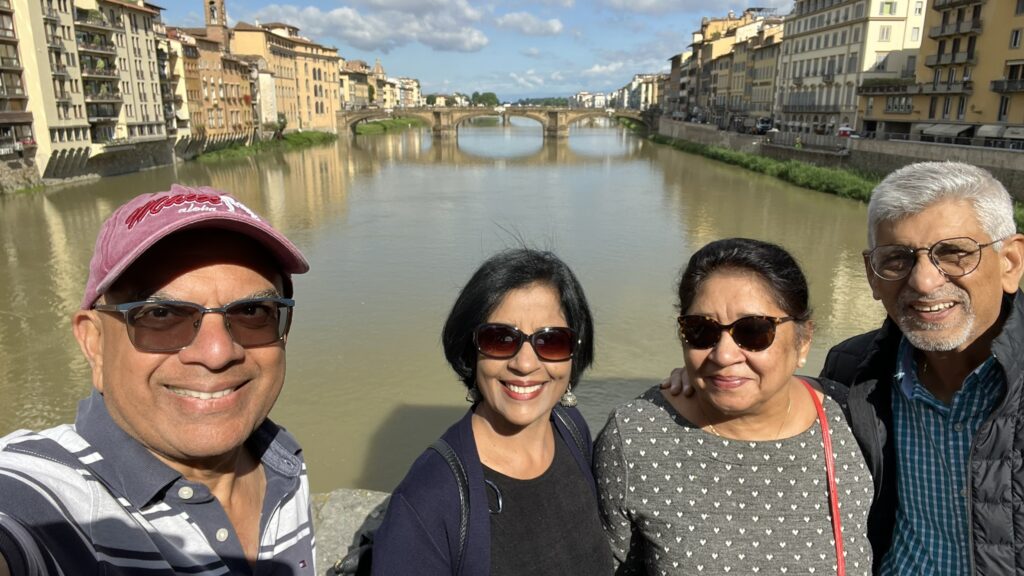
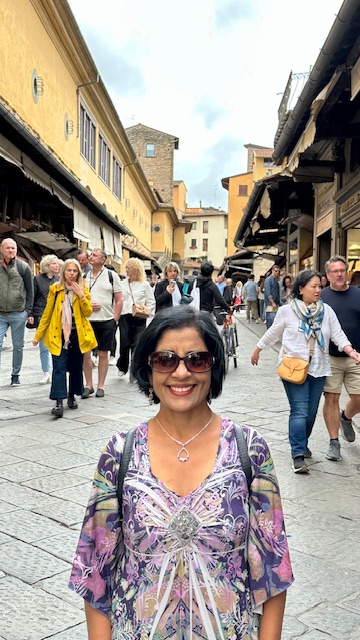
Vasari Corridor – The Vasari Corridor is an elevated and enclosed passageway that connects Palazzo Vecchio with Palazzo Pitti. The corridor is known for its interesting route, passing through the Uffizi Gallery, over the Ponte Vecchio, and church of Santa Felicita, offering panoramic views of Florence. Built by Giorgio Vasari in 1565, it allowed the Medici family to travel privately and securely between their residence and the seat of government. The Vasari Corridor can only be visited on a guided tour. We walked through this corridor in 2014 as part of a guided tour which included a visit to the Uffizi gallery.
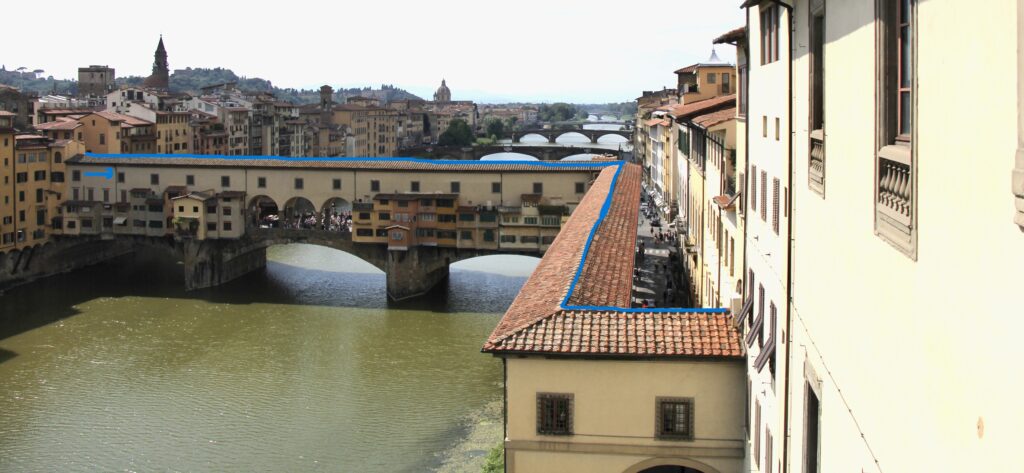
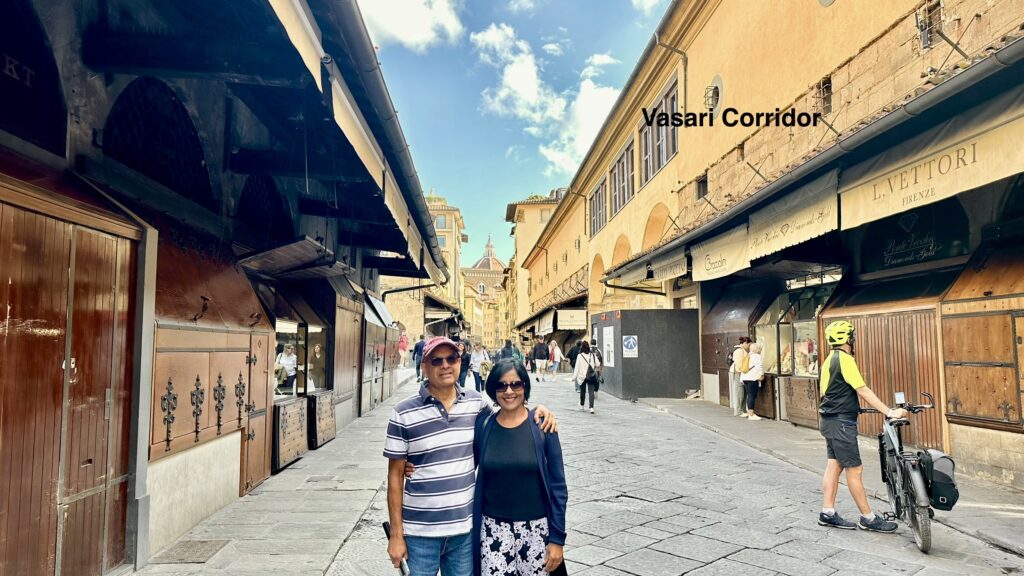
Uffizi Gallery – We visited this museum in 2014. The gallery, housed in a 16th-century building originally designed as offices for the Medici family, is a prominent art museum located adjacent to the Piazza della Signoria. It is known for its extensive collection of Renaissance paintings and sculptures from the 13th to 18th centuries.
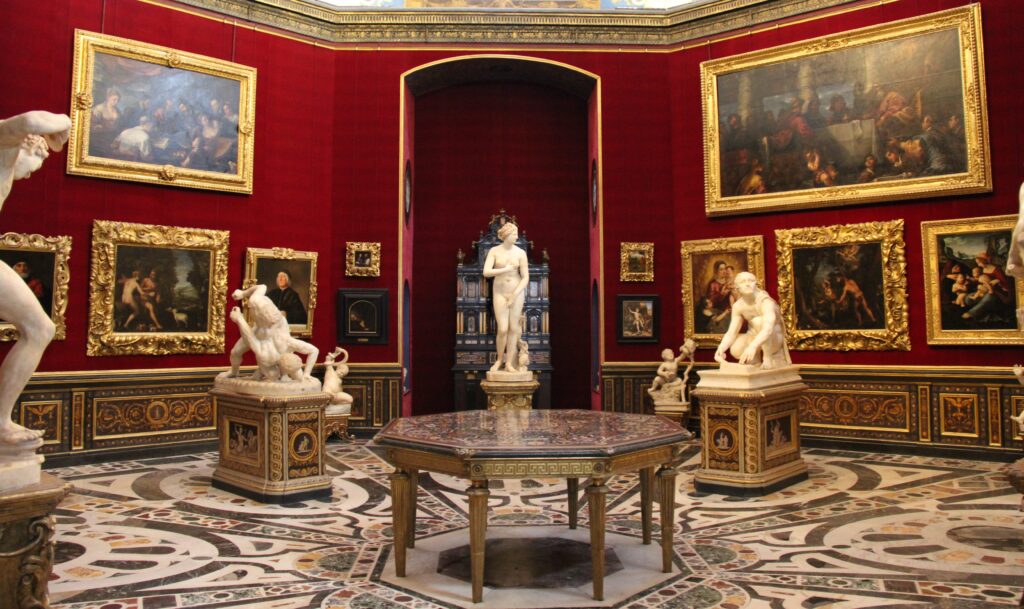
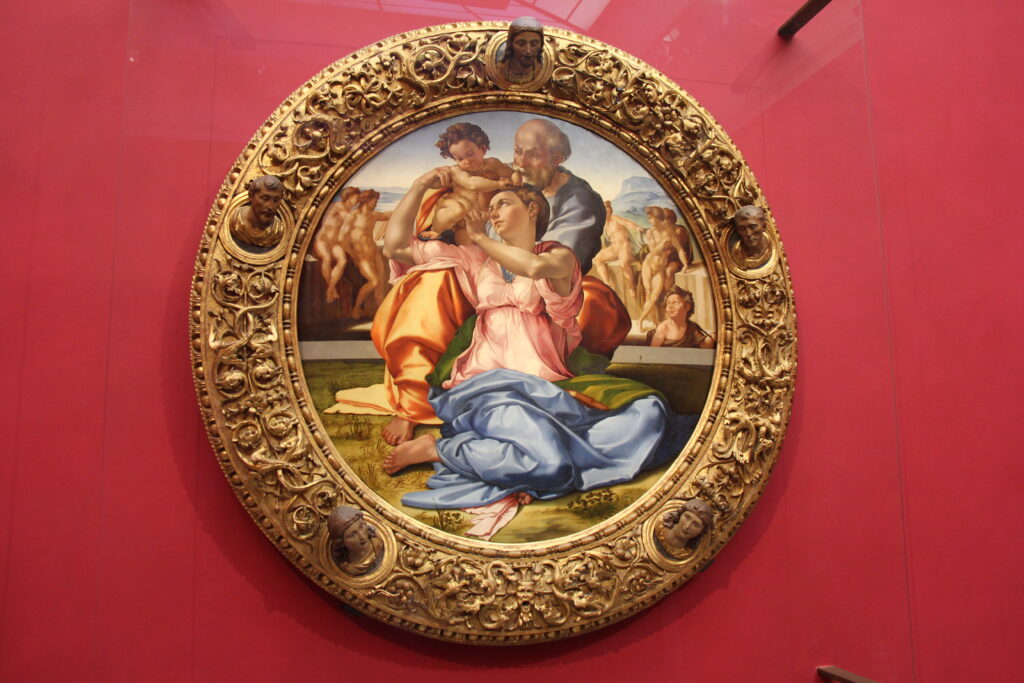
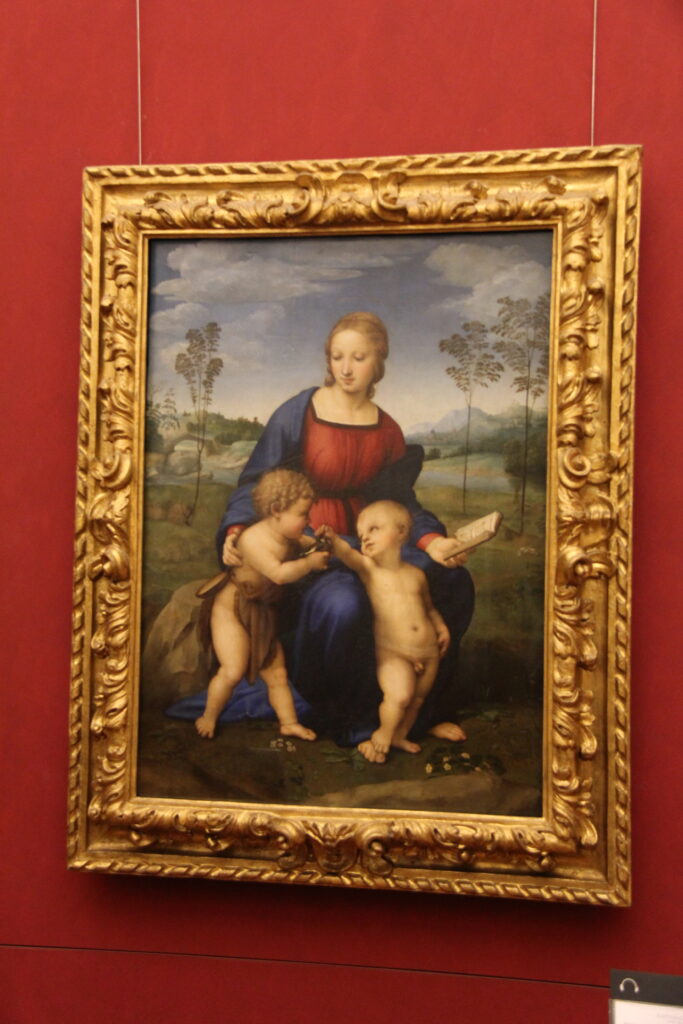
Galleria dell’Accademia (Accademia Gallery) – We visited this place in 2014 as part of a guided tour. This gallery is best known for the original Michelangelo’s statue of David which is considered to be one of the most famous works of art in the world. This statue once stood outside on Piazza della Signoria, but was moved here in 1873 to protect it from environmental damage and vandalism. The statue had been exposed to the elements for over 350 years, and concerns grew about its preservation.
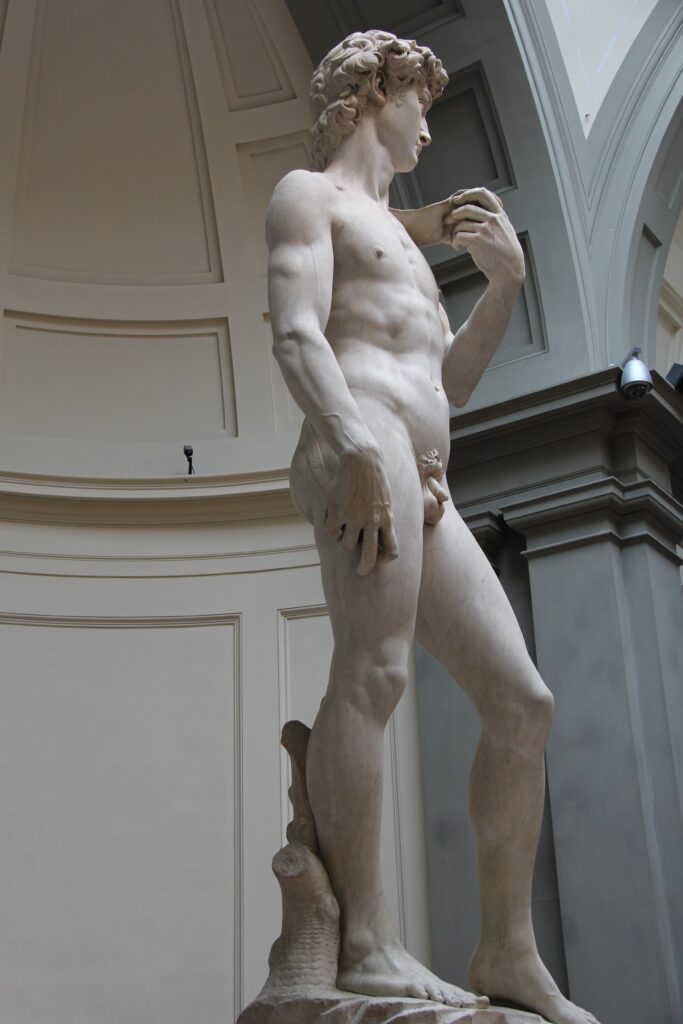
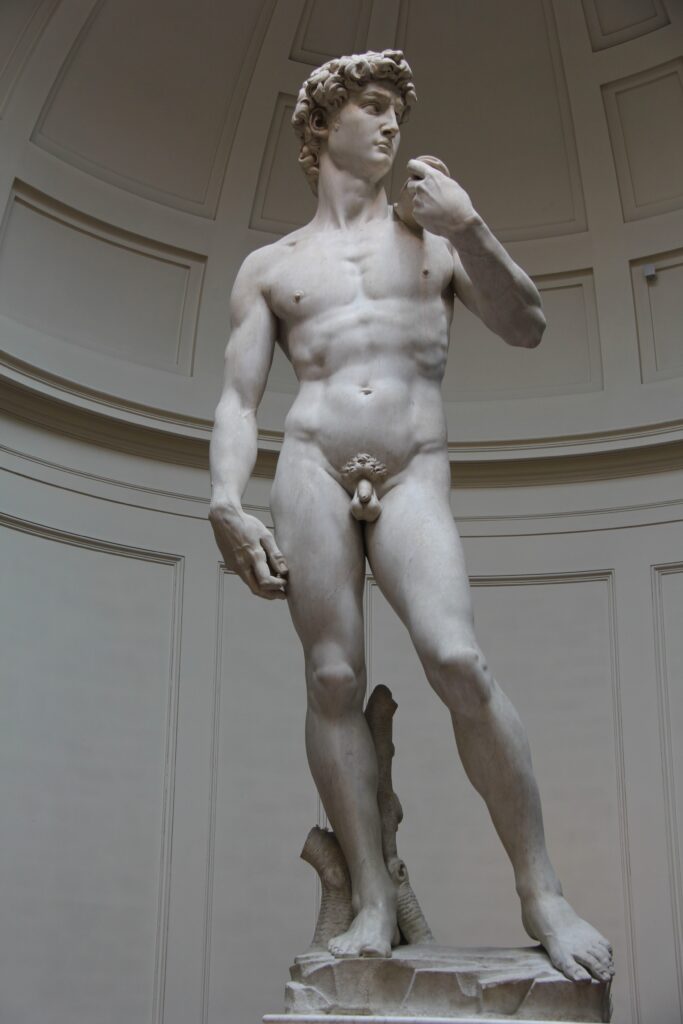
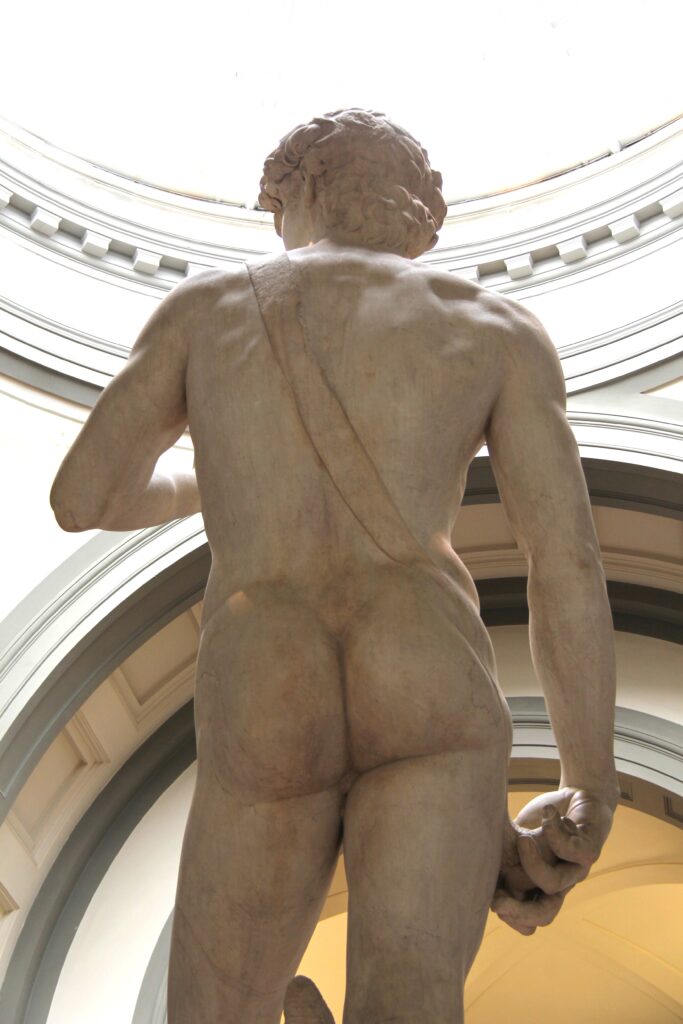
After staring at David for quite a bit of time and taking his pictures from all angles, we moved on to see other sculptures, musical instruments, and paintings.
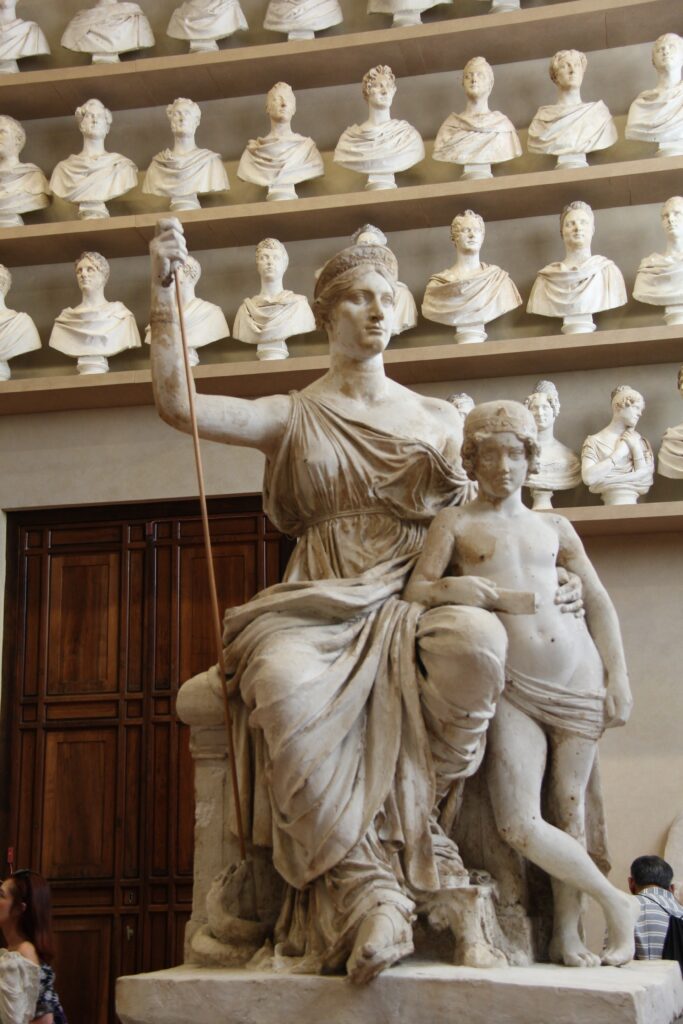
Lorenzo Bartolini (1808-1813)
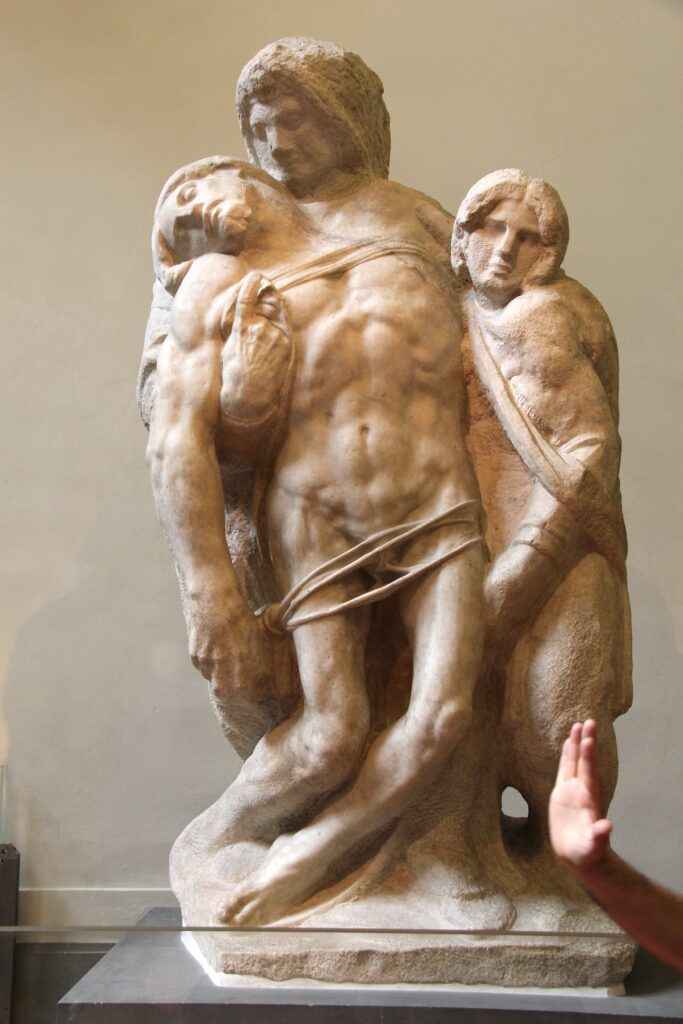
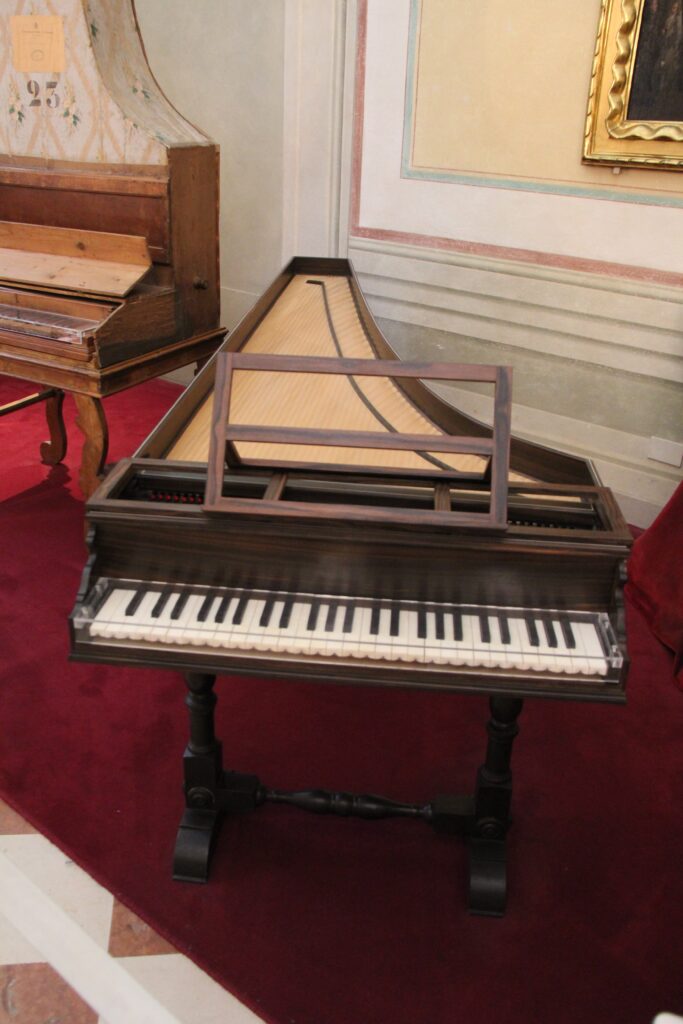
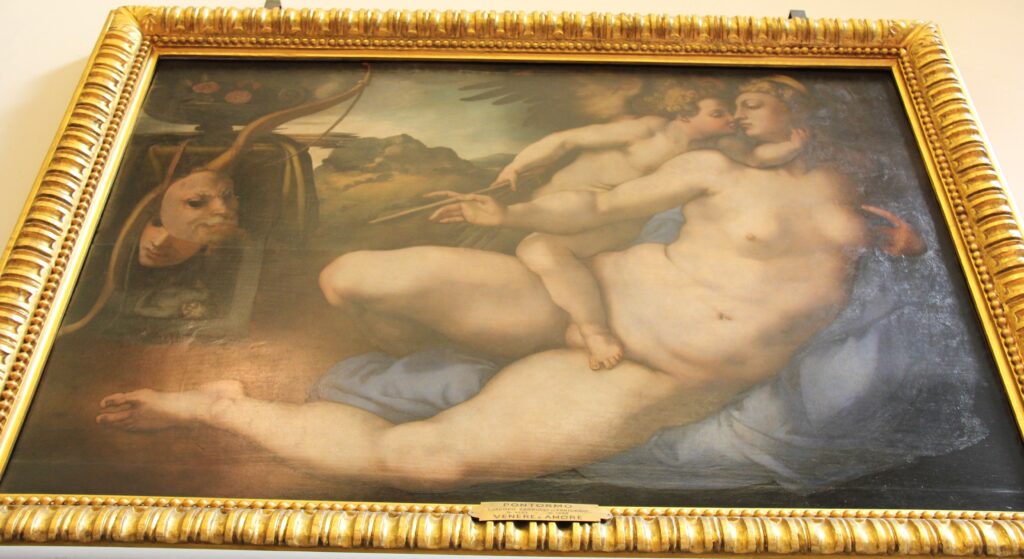
Piazza della Repubblica – Located on the site of the ancient Roman forum, it was the main market square and center of public life in the city. The square was extensively renovated in the late 1800s when Florence briefly became the capital of a unified Italy, including the demolition of the old market and the Jewish ghetto. The square is a popular gathering place for both locals and tourists, offering cafes, restaurants, and a lively carousel.
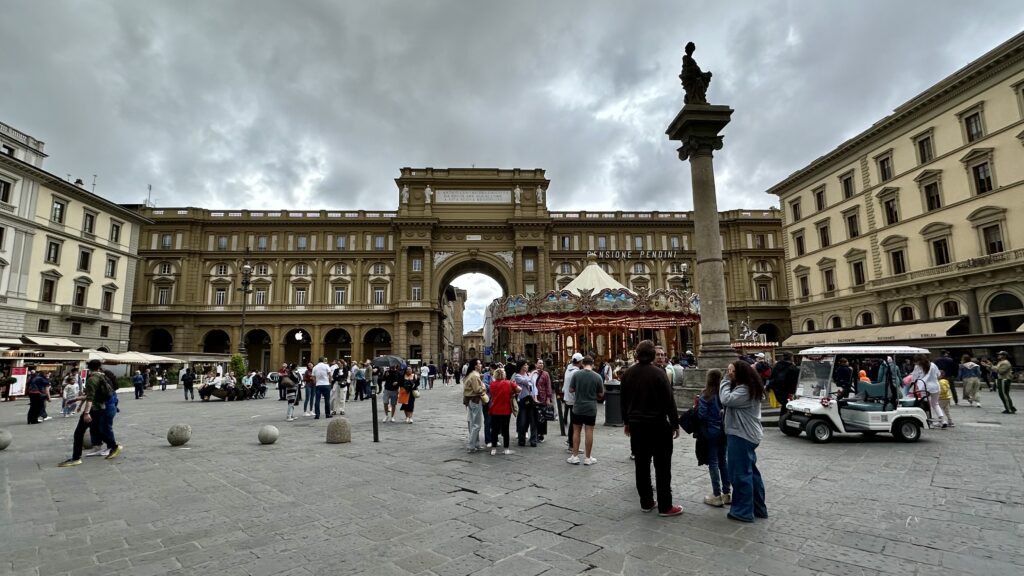
Florence Cathedral complex – Also called the Duomo di Firenze or Cathedral of Santa Maria del Fiore, it is one of the largest churches in the world. Construction of the church began in 1296, and completed 140 years later in 1439 with the completion of the dome. The Duomo is just one part of what is called the monumental complex of Santa Maria del Fiore. The complex also includes, a museum, the bell tower, the dome, the baptistery, and Santa Reparata.
We bought Giotto combo tickets for €20/person that included the following –
- The Cathedral – free to enter even if you don’t buy the combo ticket
- Baptistery of San Giovanni
- Opera del Duomo Museum
- Giotto’s Bell Tower
- Santa Reparata
The online ticket website will ask you to select a time – which is for the time you will be climbing the Giotto’s Bell Tower. The ticket is valid for 3 days and you can see the rest of the sites in the complex anytime over the 3 days.
Florence Cathedral complex, Baptistery of San Giovanni – Raised on the foundations of another Roman building, the Baptistery dates back to 11th century (it was consecrated in 1059). Its form is octagonal, and the exterior is sheathed in white marble and green Prato marble.
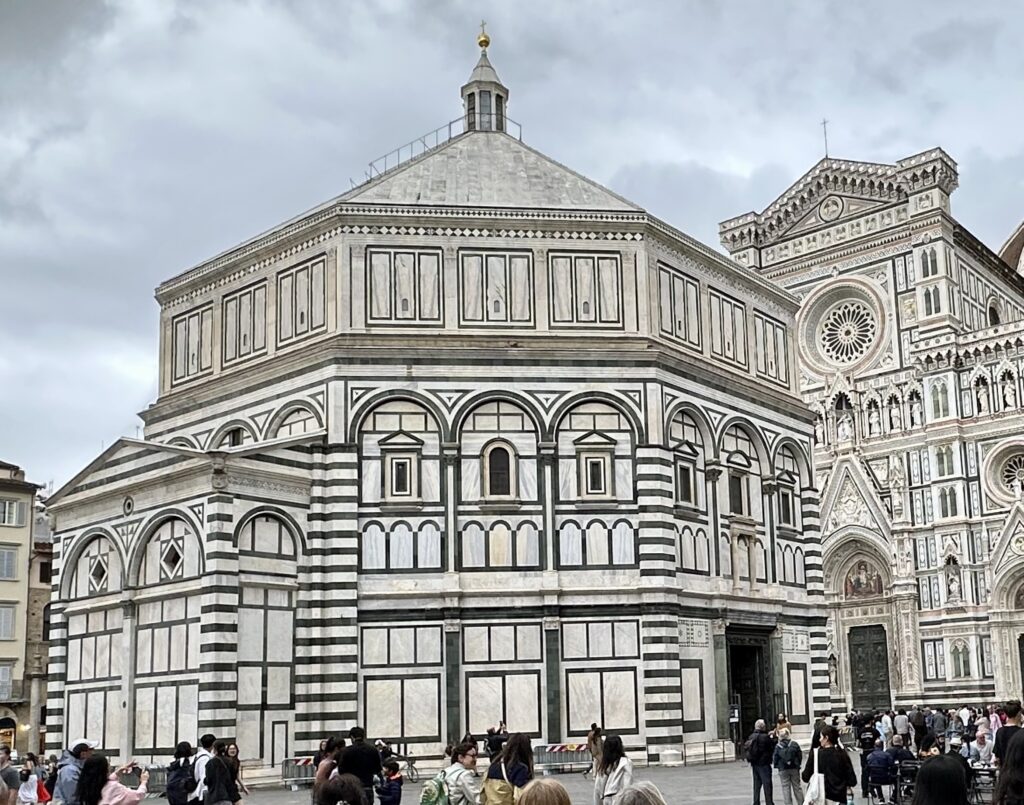
One of the most interesting things to see inside the Baptistery is the interior of the dome – it is entirely covered with mosaic showing the Angelic Hierarchies, Scenes from Genesis, Scenes from the life of Joseph the Patriarch, Scenes from the life of Christ, Scenes from the life of St. John the Baptist, and the Last Judgement. On the day we visited, the Baptistery was undergoing restoration of the dome interior and it was not visible. There was a huge picture of the mosaic ceiling inside. We spent 10-15 minutes walking around the interior admiring the colorful mosaic patterns on the floor and the walls.
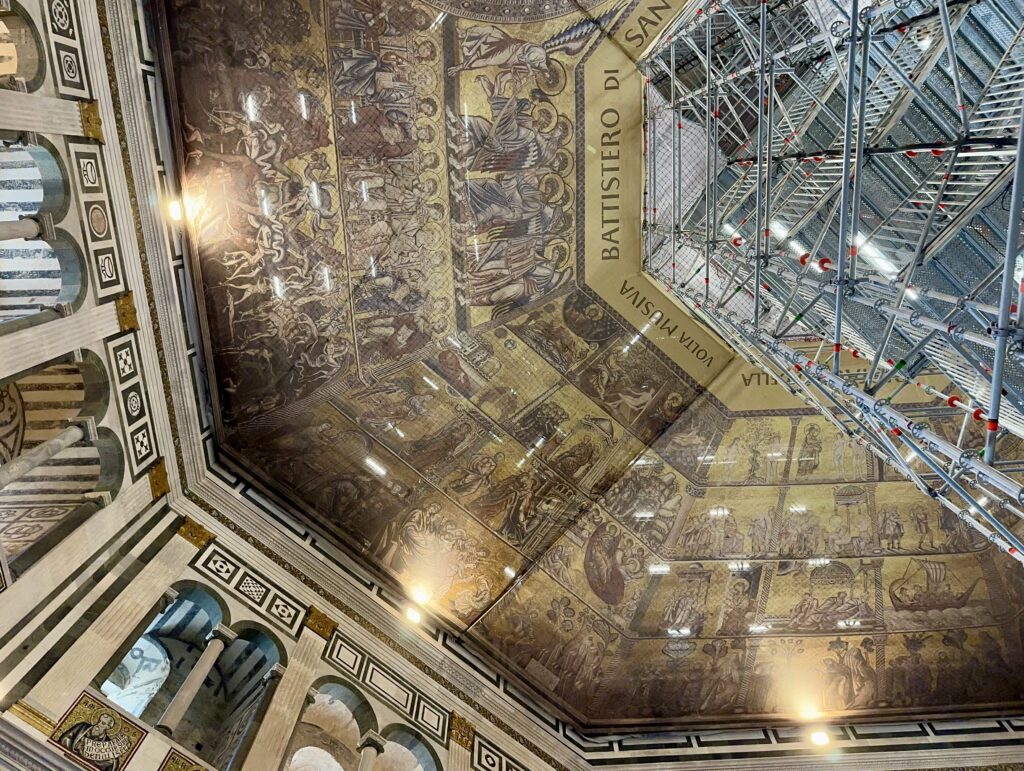
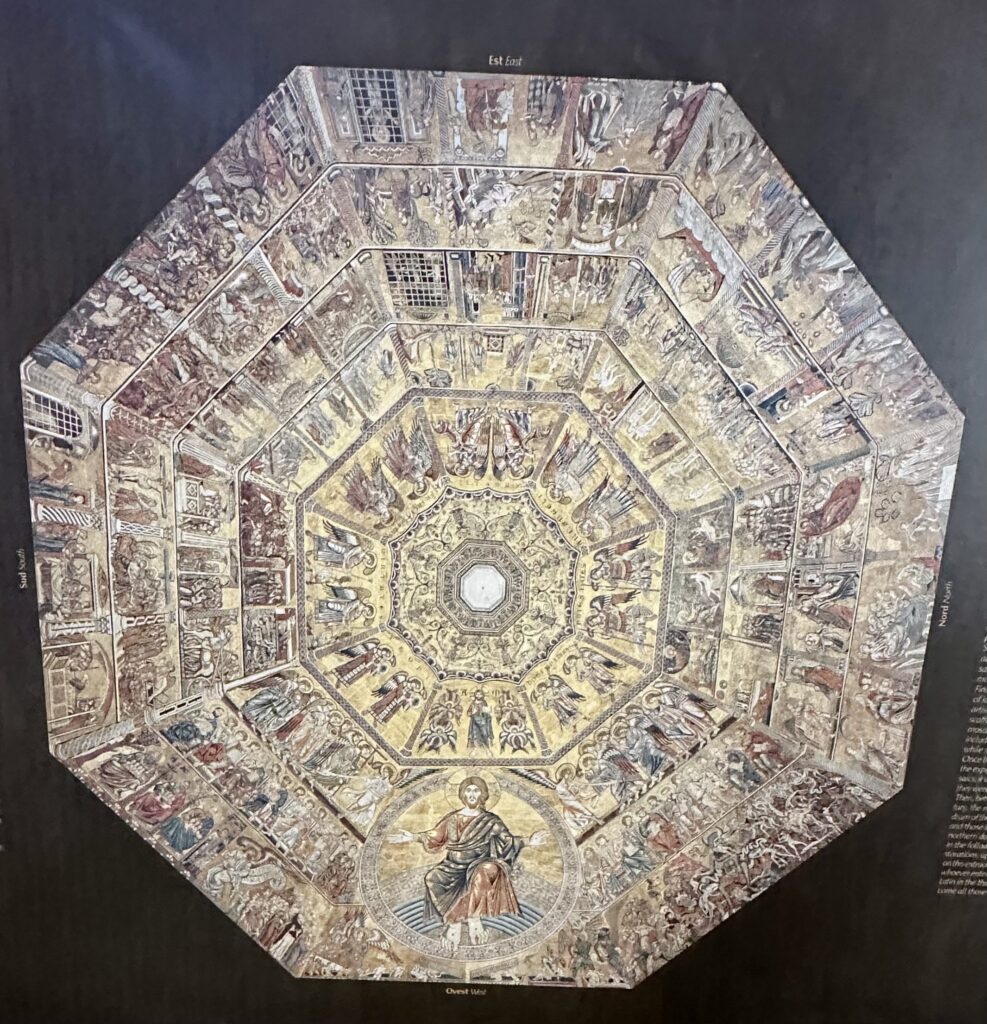
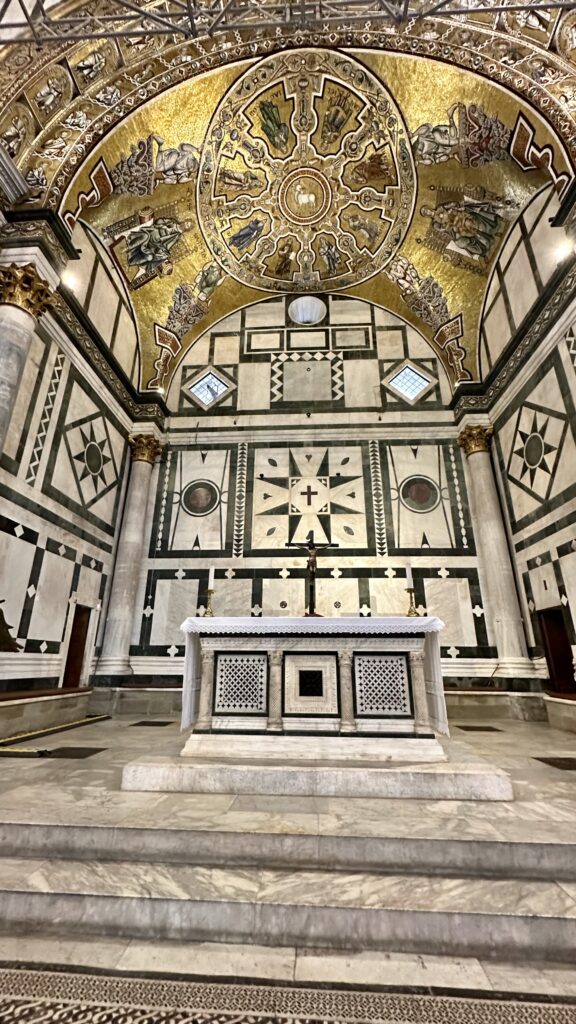
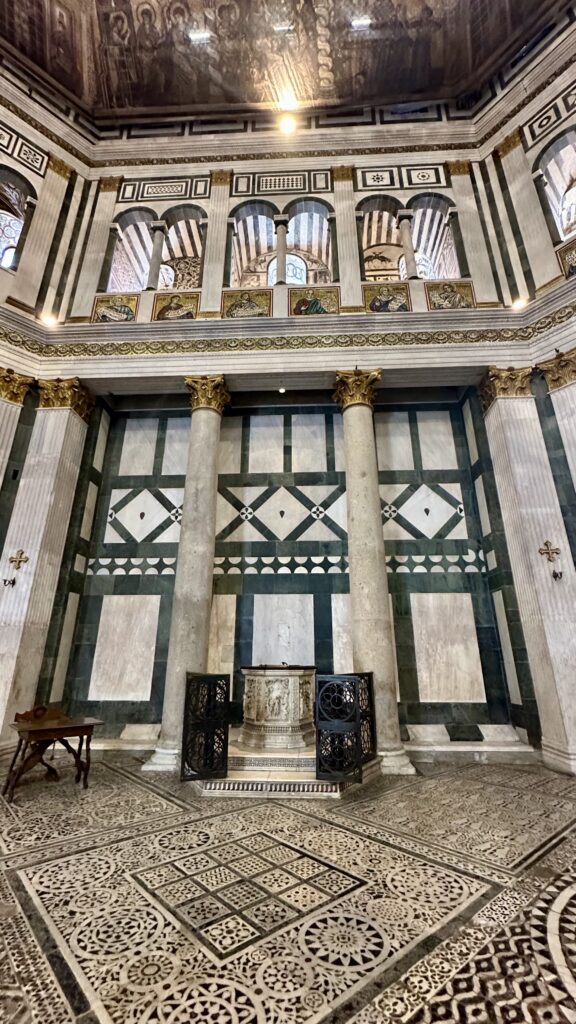
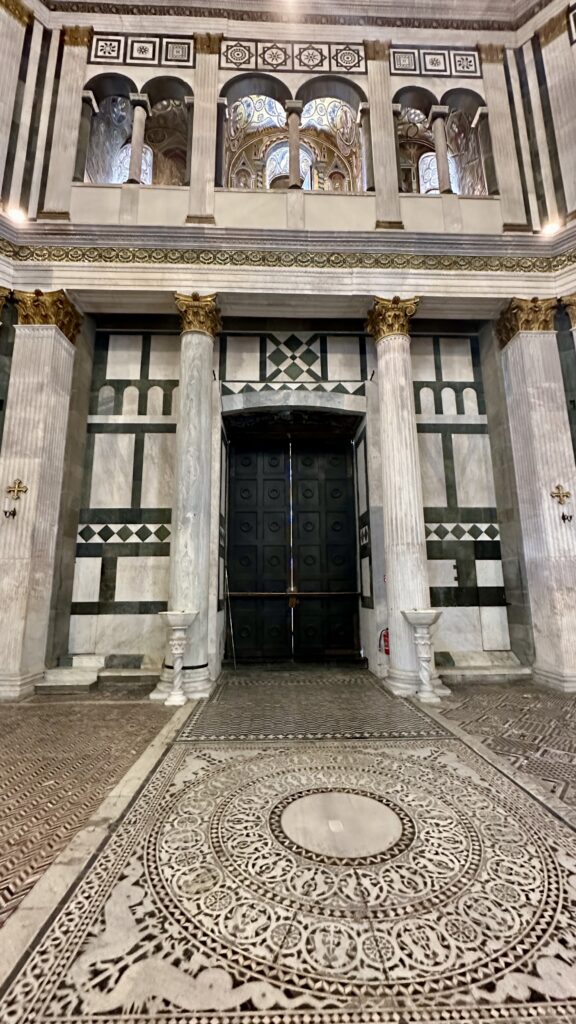
Florence Cathedral complex, Giotto’s Bell Tower – At the selected time (12pm), we got in line in front of the entrance to the Bell Tower. The line is on the same side and near the line getting into Santa Reparata. We waited for maybe 10 min before we were allowed in. No backpacks allowed here. Small purse or bags which hang on your shoulders are allowed. The majestic bell tower of the Cathedral was built between 1334-1359. The slender structure is square in plan with 14.45m (47.41 ft) sides and is 84.7m (277.9 ft) tall. There are 414 steps to the top.
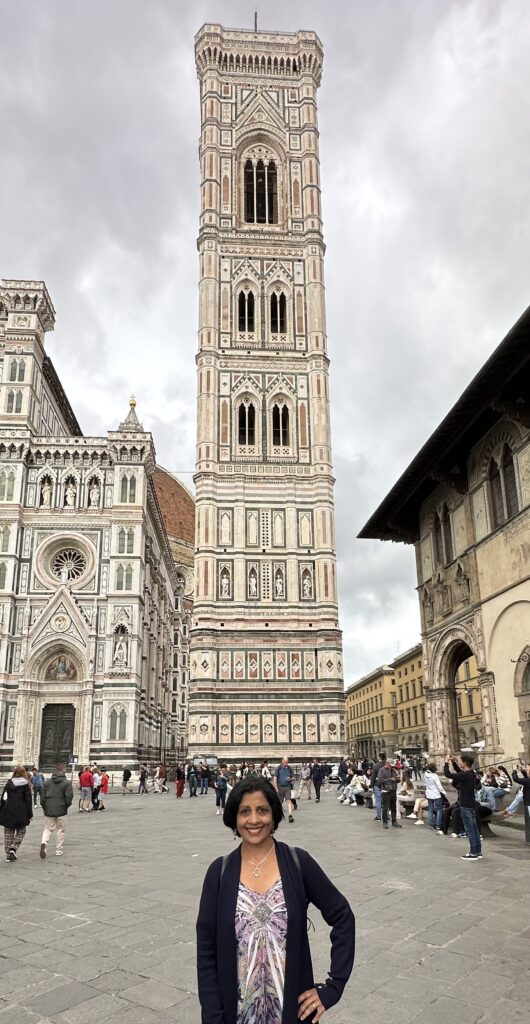
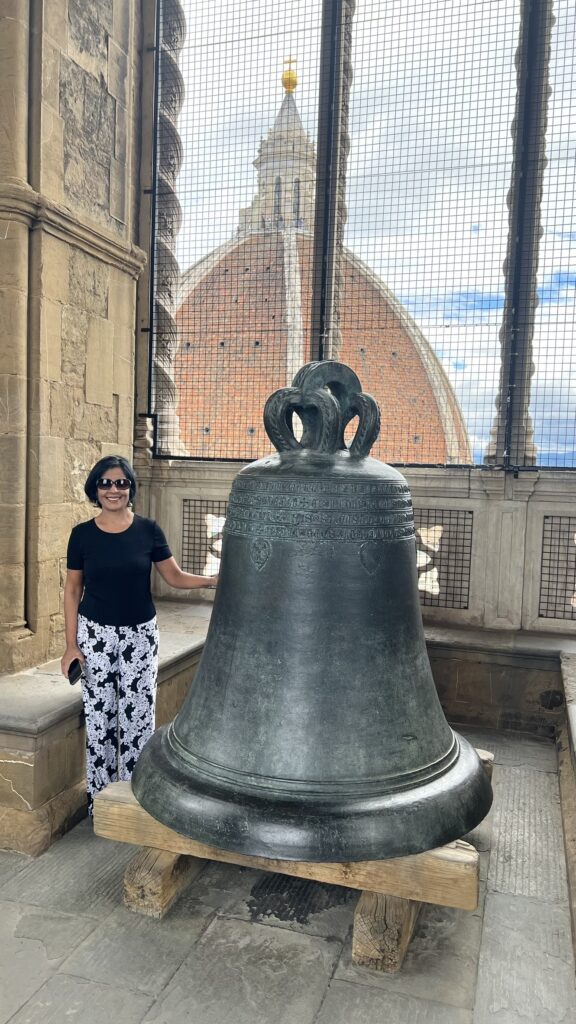
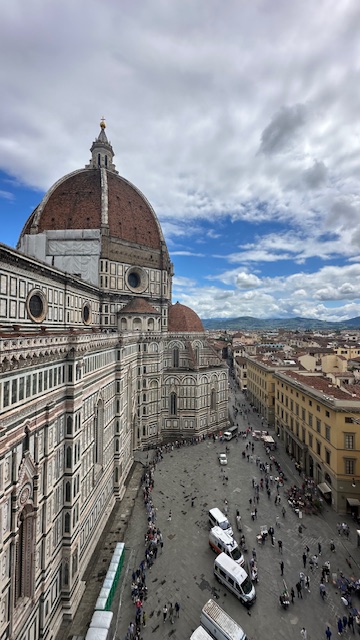
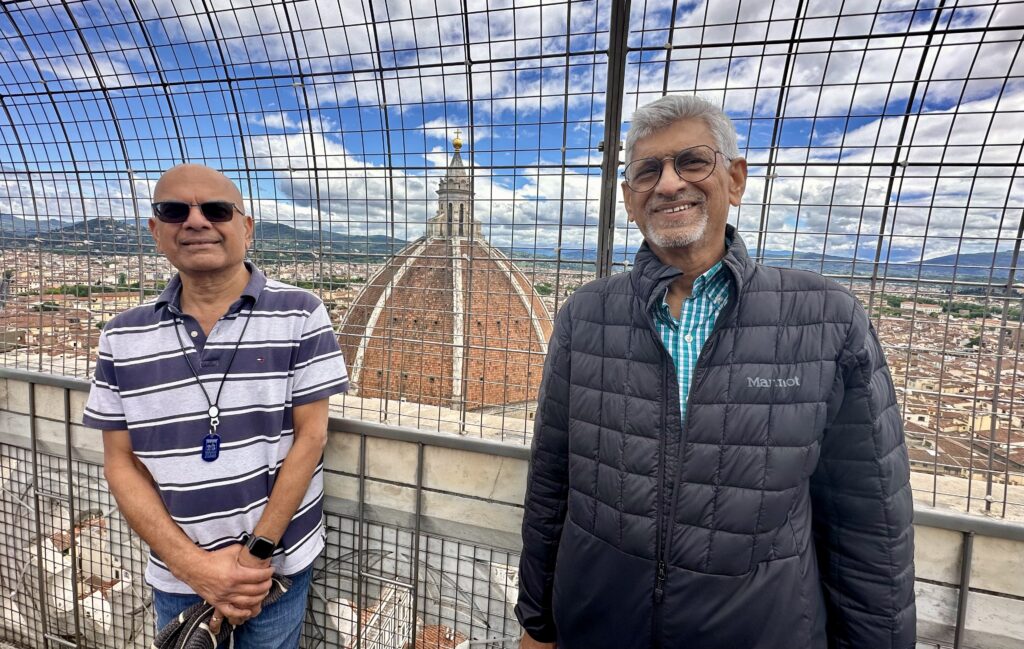
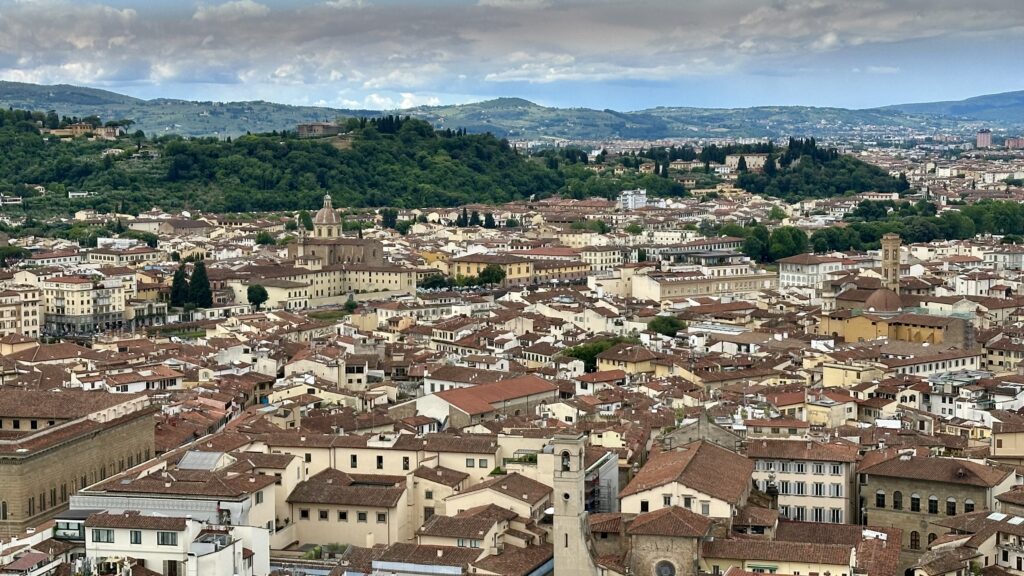
Florence Cathedral complex, Santa Reparata – Saint Reparata was a 3rd-century virgin martyr, and the co-patron saint of Florence. The original cathedral dedicated to Saint Reparata, was built possibly around the 5th century AD and was the main place of worship in Florence until the construction of the current Duoma began in 1296. Santa Reparata was then progressively demolished to make way for the larger cathedral.
Excavations between 1965 and 1973 unearthed the significant remains of the ancient basilica, offering insights into the early Christian era in Florence. Visitors can explore the mosaic floors, tombs, and frescoes in this archaelogical area. We had to stand in line for 15-20 minutes before we got in. Once you are in, you can also see the interior of the Florence Cathedral (no need to stand in line again).
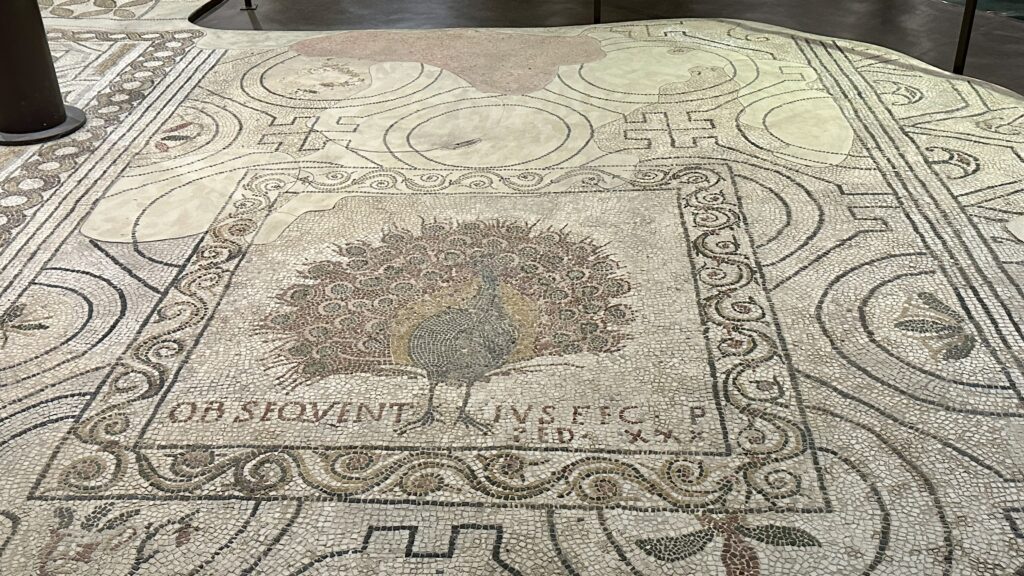
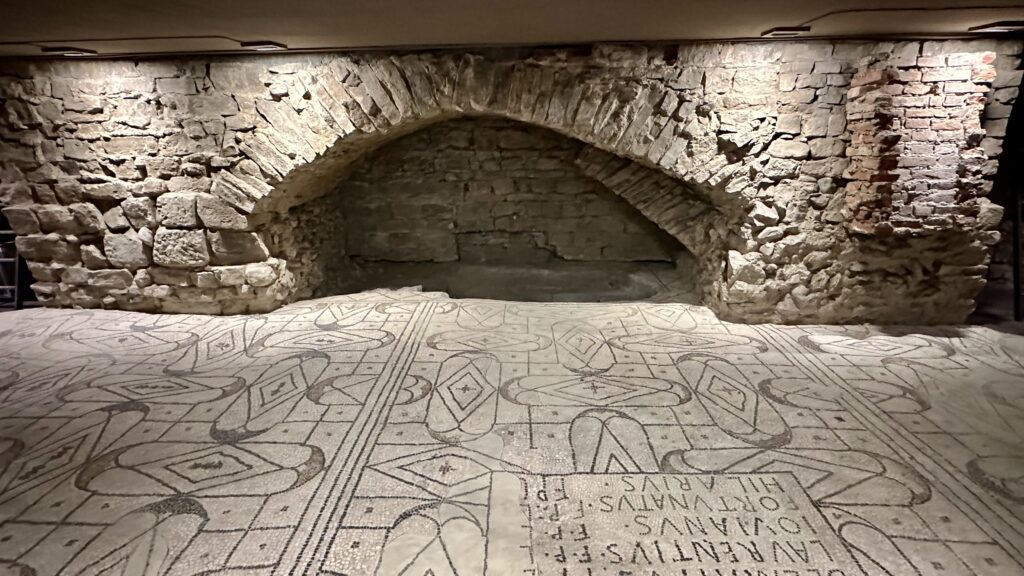
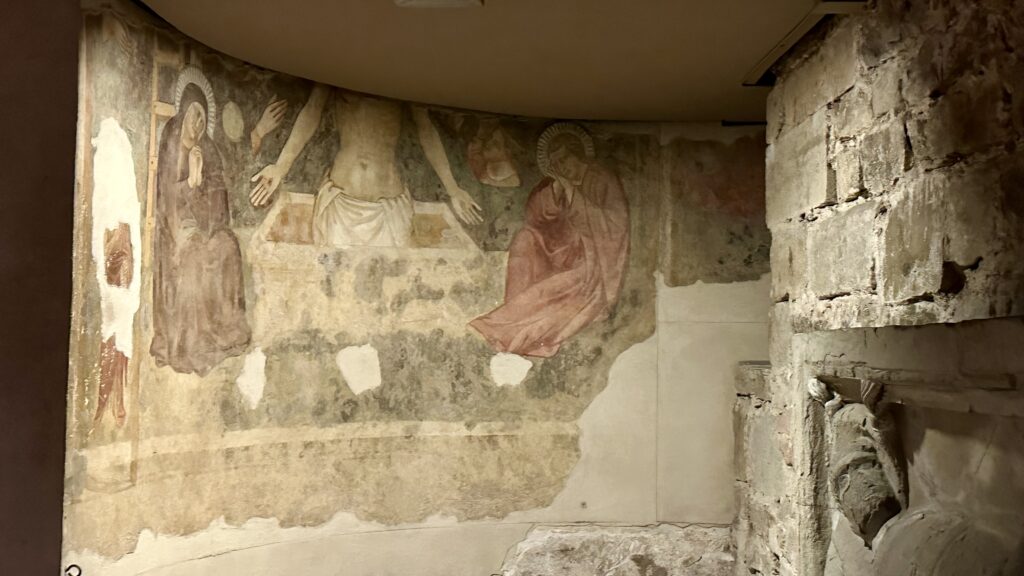
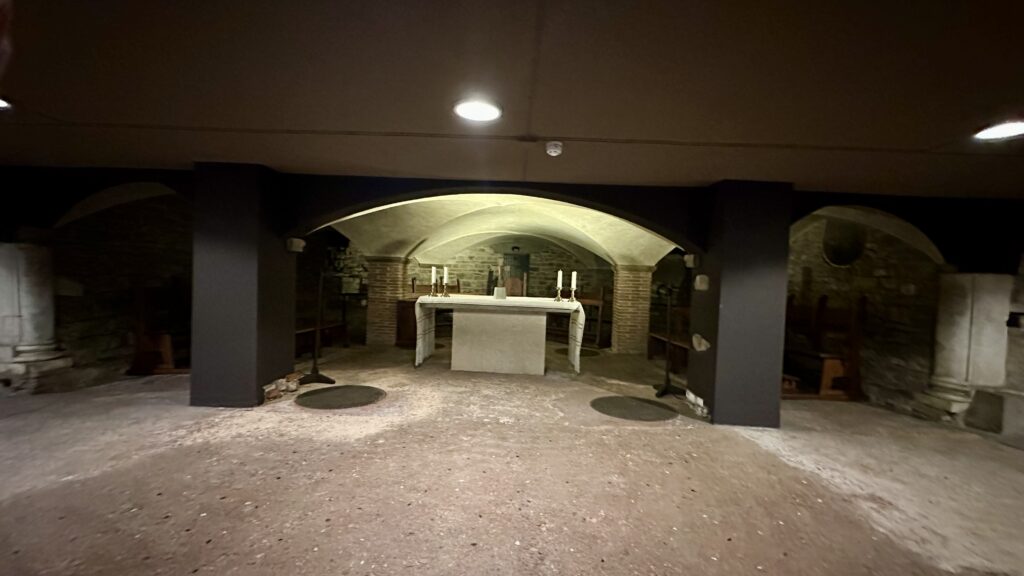
Florence Cathedral – After exploring the Santa Reparata archaelogical site, we walked up to the interior of the Cathedral. Construction of the cathedral began in 1296 and completed 2 centuries later in 1436 with the completion of the dome which is the largest brick dome ever constructed. The cathedral is one of the largest churches in the world, measuring 160 meters in length, 43 meters in width, and 90 meters at the transept.
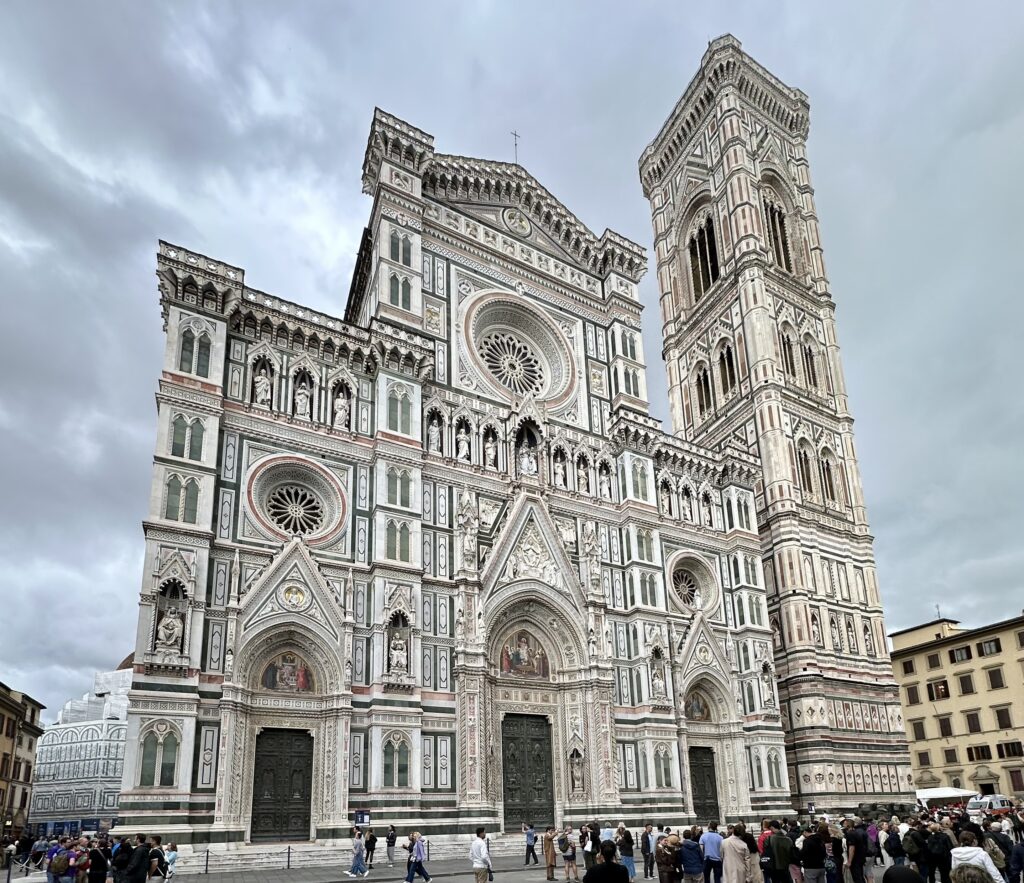
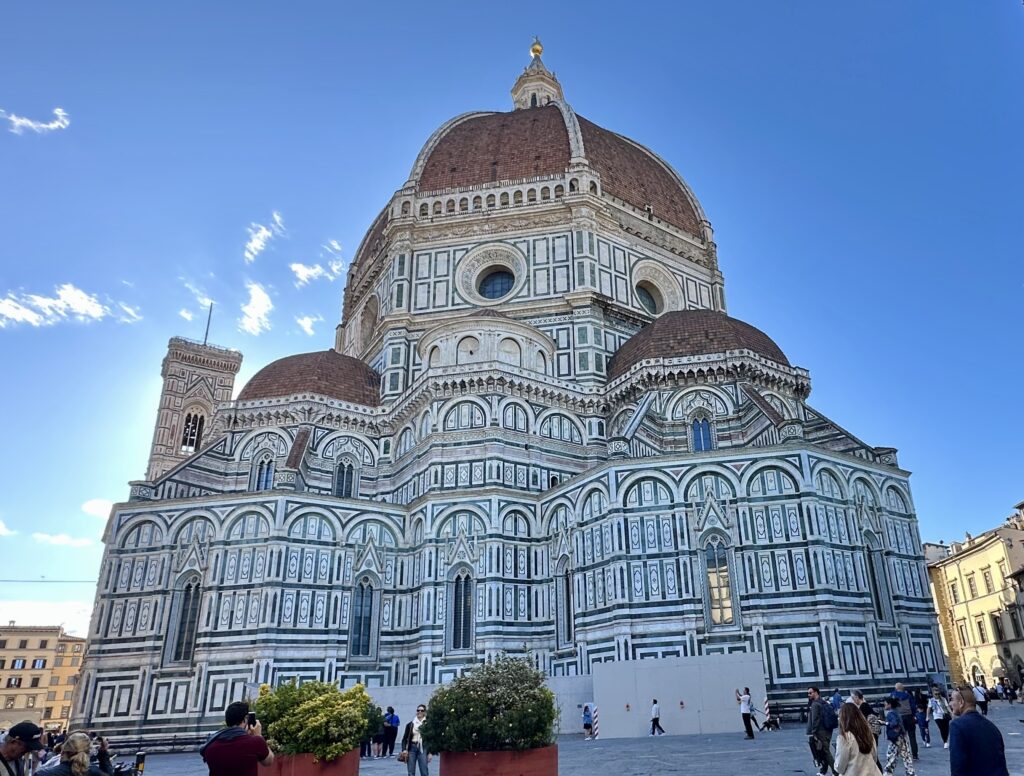
The inside of the cathedral looks rather barren, compared to places like the interior of St. Peter’s Basilica in Vatican or the Duomo in Milan. Some stained-glass windows were designed by Lorenzo Ghiberti, as well as paintings and frescoes within the cathedral.
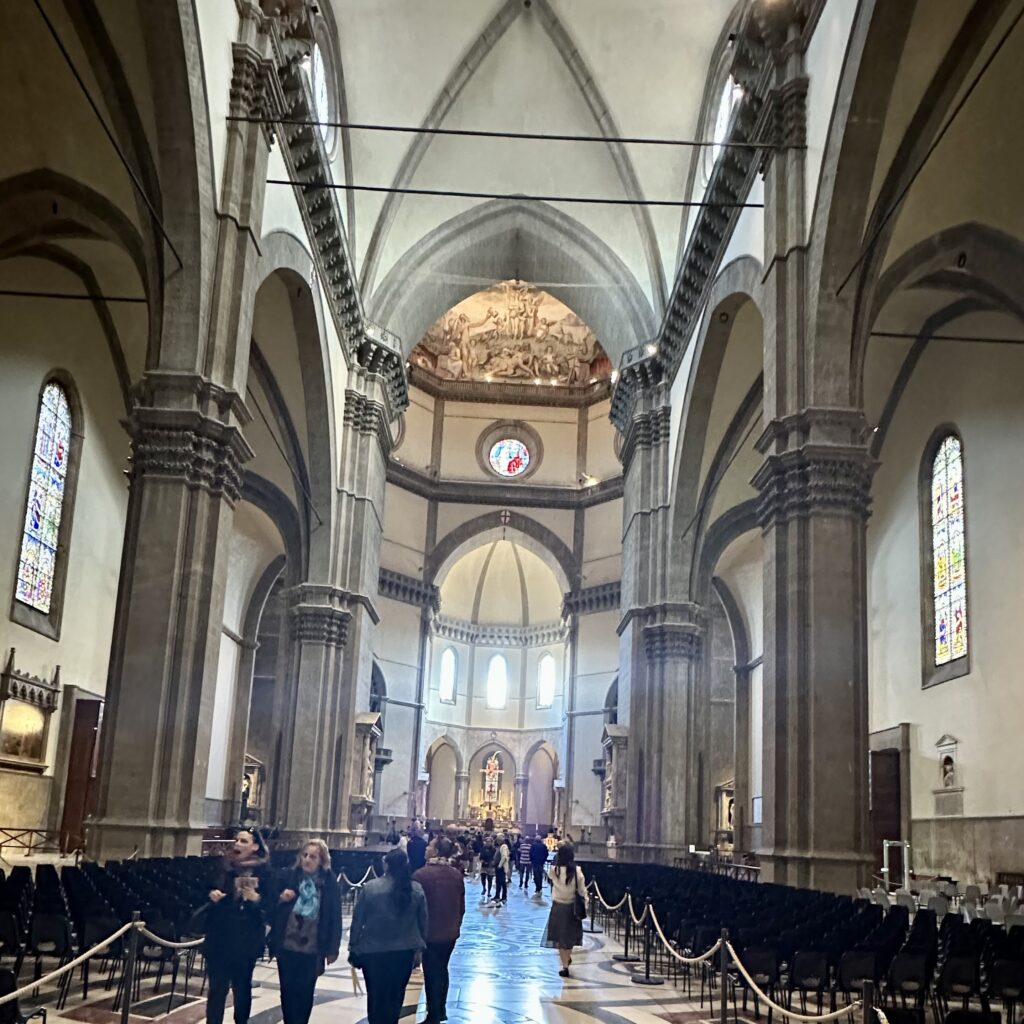
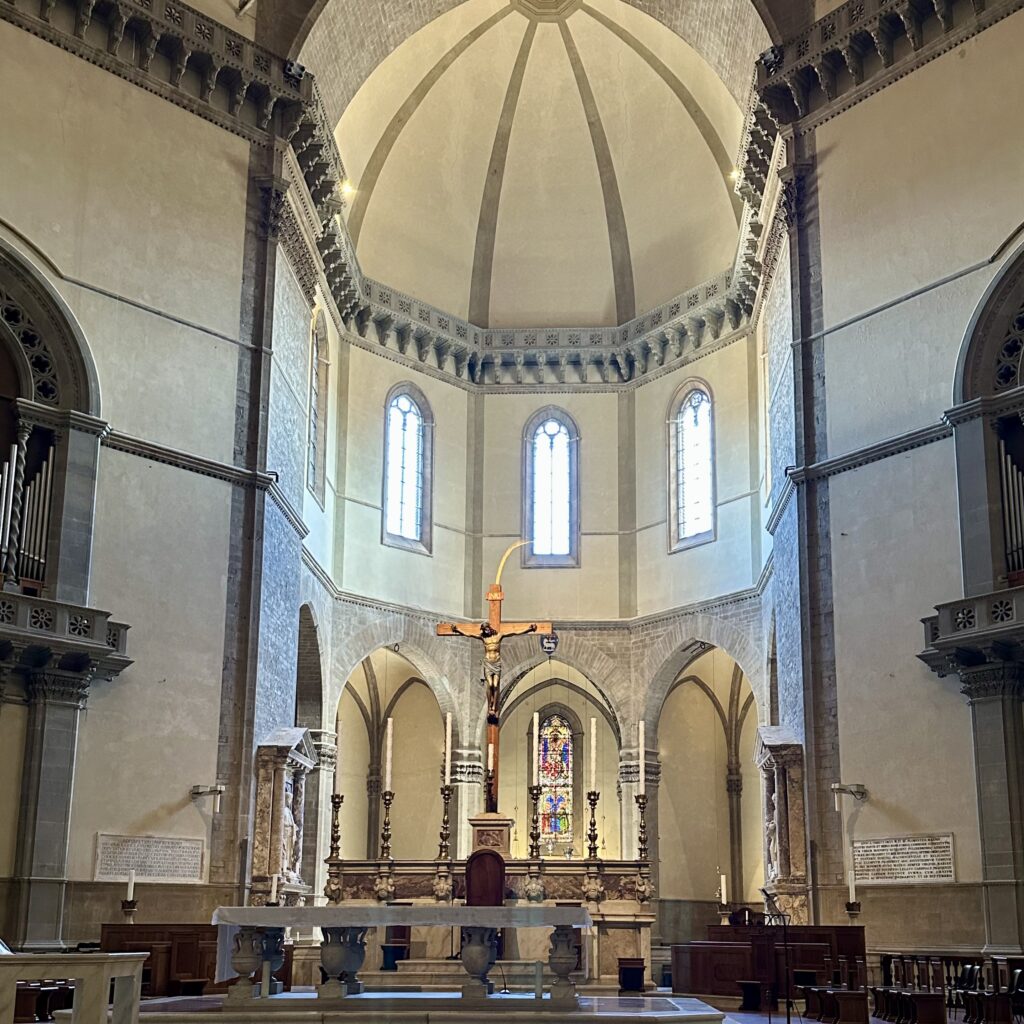
Florence Cathedral, Dome – Brunelleschi constructed the dome between 1420 and 1436. The ceiling of the dome was painted with scenes from The Last Judgement from 1572 to 1579, mainly by Giorgio Vasari. Vasari died during this time and the dome paintings were completed by Frederico Zuccari, Bartolomeo Carducci, Domenico Passignano, and Stefano Pieri.
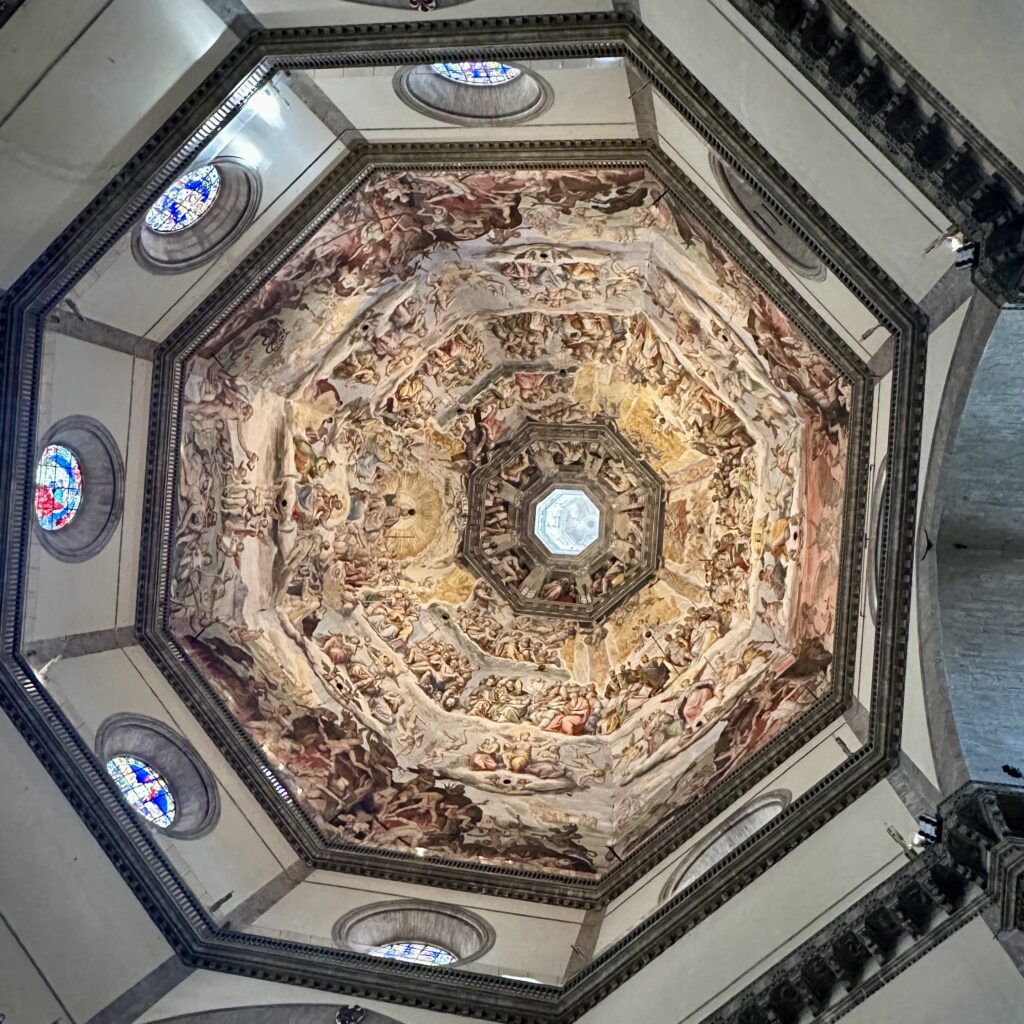
Florence Cathedral complex, Opera del Duomo Museum – This museum displays a lot of items that once adorned the Baptistery, the Bell Tower, and the Cathedral. It also has in its display the original Ghiberti’s Gates of Paradise doors created for the Baptistery.
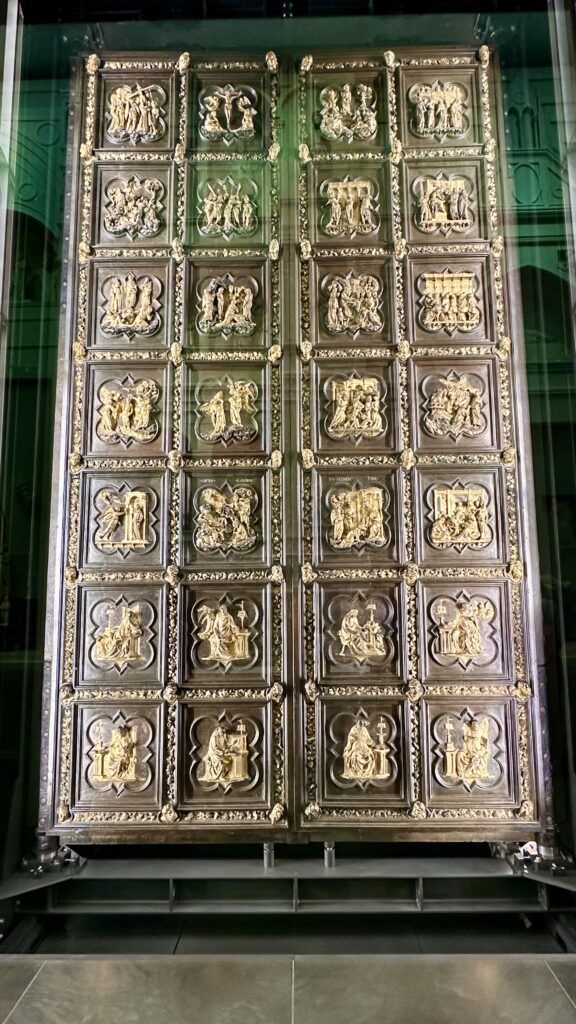
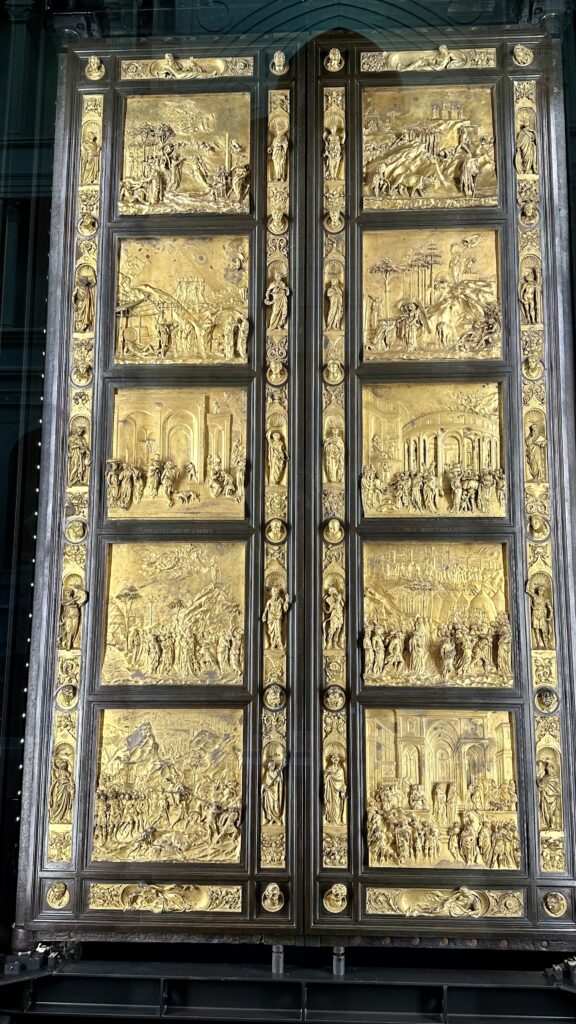
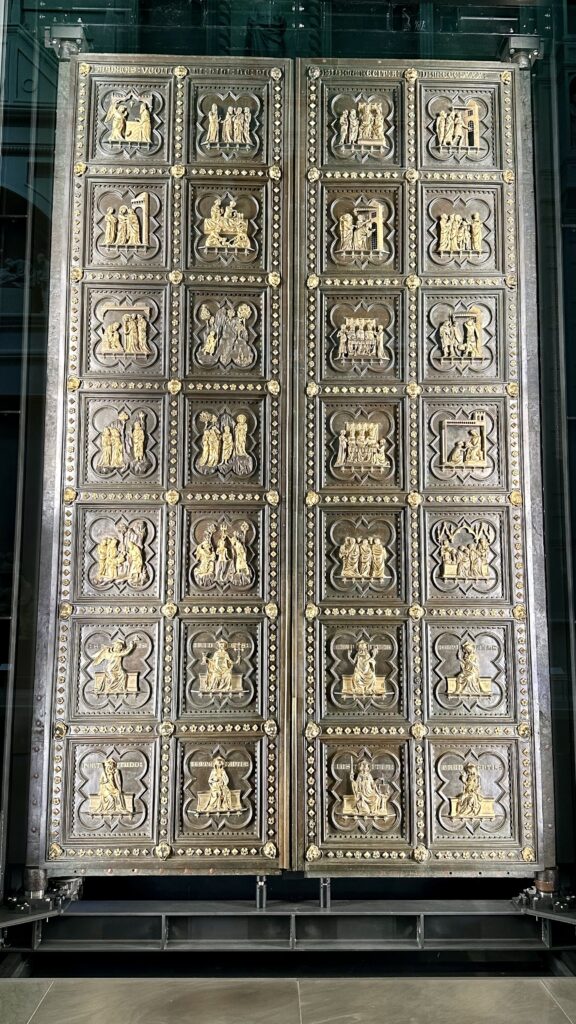
Some other interesting displays include –
- Penitent Magdalene – Donatello’s wooden sculpture of Mary Magdalene dated 1440. The wood used by Donatello is that of white poplar. Donatello’s gaunt, emaciated figure differs greatly from most depictions, which show a beautiful young woman in nearly perfect health. The Magdalene Penitent is famous for the detailed and very realistic carvings on the statue.
- The Deposition (also called the Bandini Pietà or The Lamentation over the Dead Christ) is a marble sculpture by Michelangelo who worked on it between 1547 and 1555. The sculpture depicts four figures: the dead body of Jesus Christ taken down from the Cross, Nicodemus, Mary Magdalene and the Virgin Mary.
- Precious and religious items from the Cathedral and Baptestery
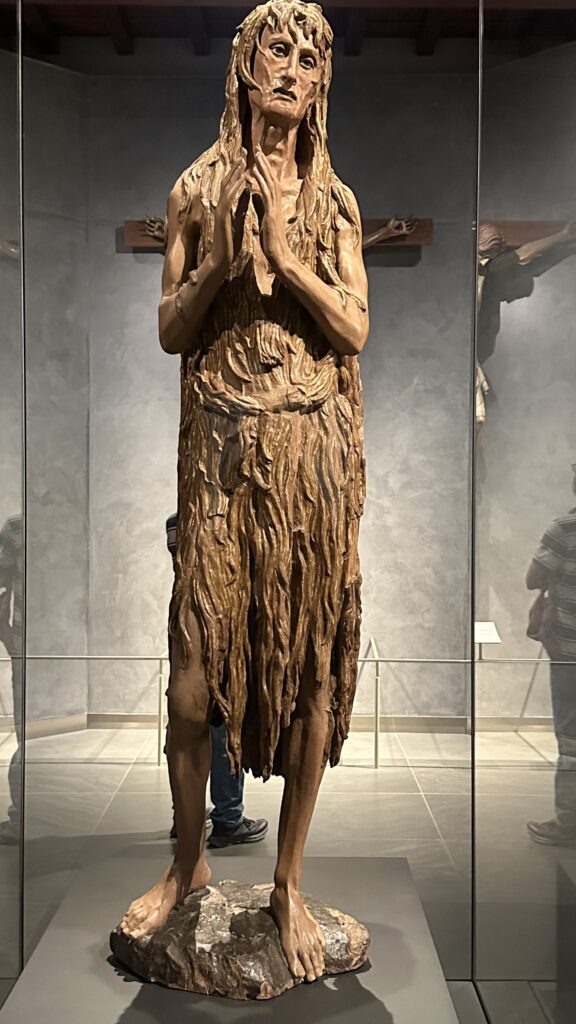
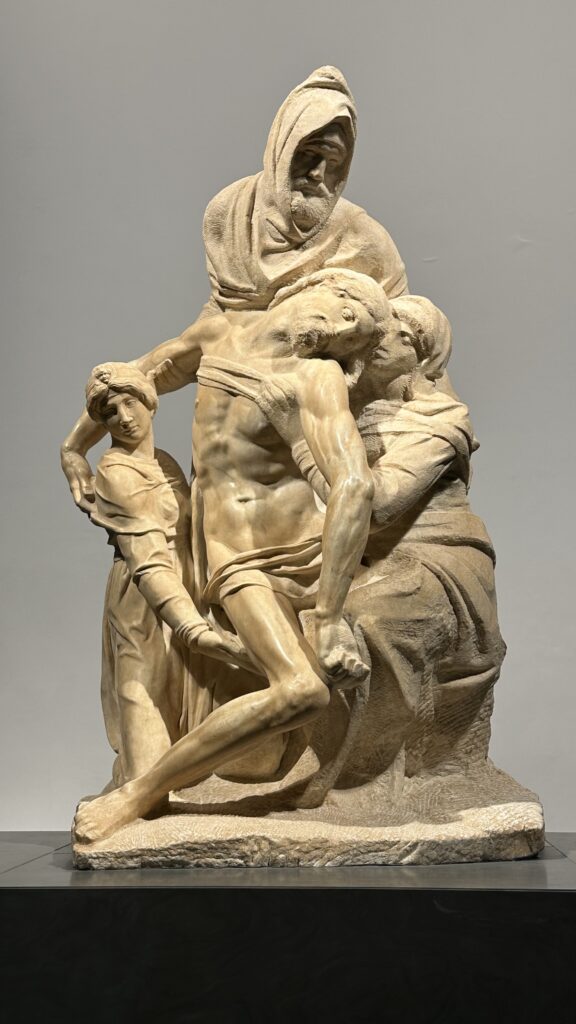
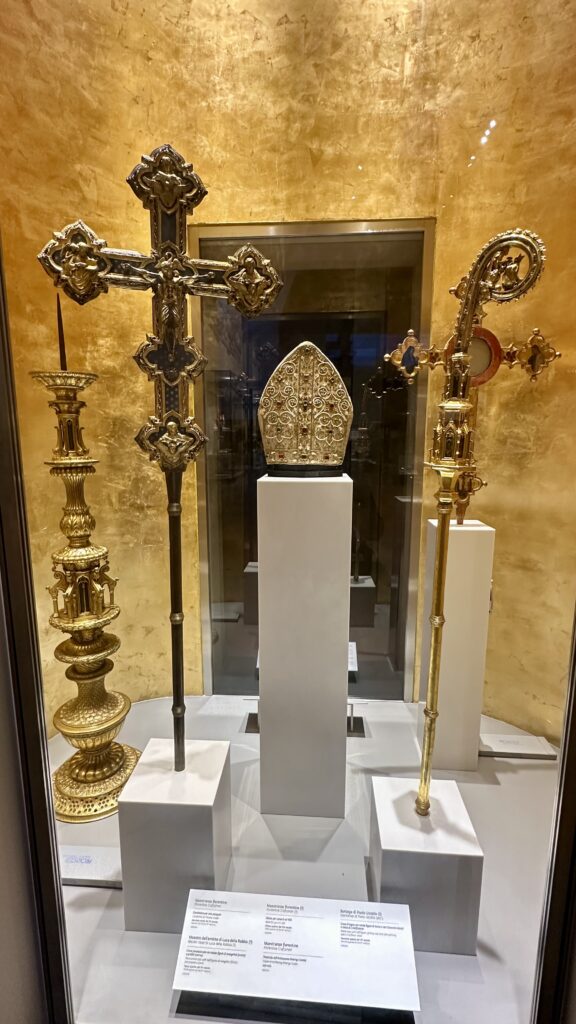
Pitti Palace – We bought combo ticket for Pitti palace and Boboli garden – €22. Totally worth the money spent. Plan on spending 2-3 hours in Pitti palace as it has many museums – Palatine Gallery, Museum of modern art, Museum of Costume and Fashion, Treasury of the Grand Dukes, the Imperial and Royal Apartments.
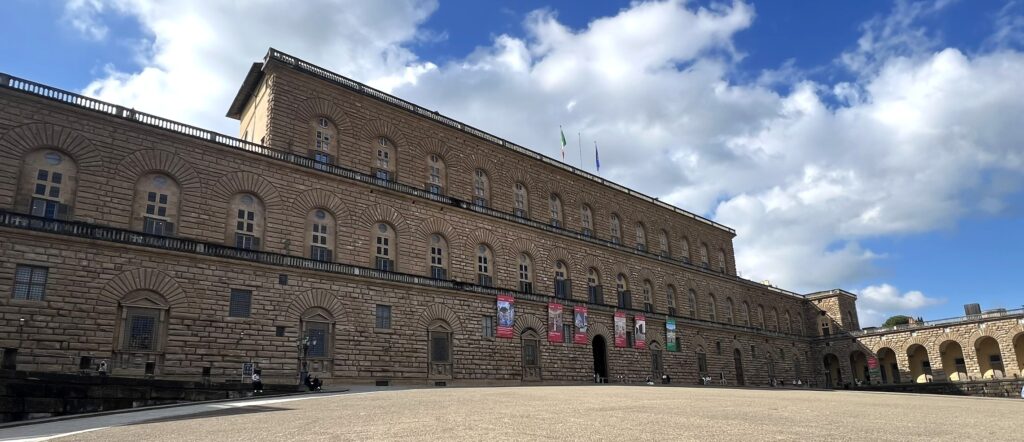
Pitti Palace, Palatine Gallery – is the main gallery of Palazzo Pitti, containing over 500 Renaissance paintings, which were once part of the Medicis’ and their successors’ private art collection. Pictures of some of the 28 stunning rooms of the gallery –
- The Hall of Poccetti – During the 17th century this was known as the loggia gallery. It was a passage-way, open towards the Boboli hill, which connected the Grand Duke’s and Grand Duchess’s apartments, later enclosed and incorporated into the Palatine Gallery in the 19th century. The frescoed ceiling features allegorical figures of Faith, Justice, and Strength.
- Room of Jupiter – In the Medici era, it served as the Throne Room, where the Grand Duke would hold audiences. The room is renowned for its magnificent ceiling fresco by Pietro da Cortona, depicting Jupiter crowning the young sovereign.
- Room of Venus – In the Medici era, it served as the anteroom for the general public waiting to be received by the Grand Duke. The fresco on the ceiling shows young Prince being torn from the arms of Venus by Minerva, to be handed to Hercules, protector of the house of Medici.
- Portrait of Dwarf Morgante – Painting of Cosimo I’s favorite dwarf Braccio di Bartolo, nicknamed Morgante. The canvas is painted on both sides, showing the dwarf from the front and from the back.
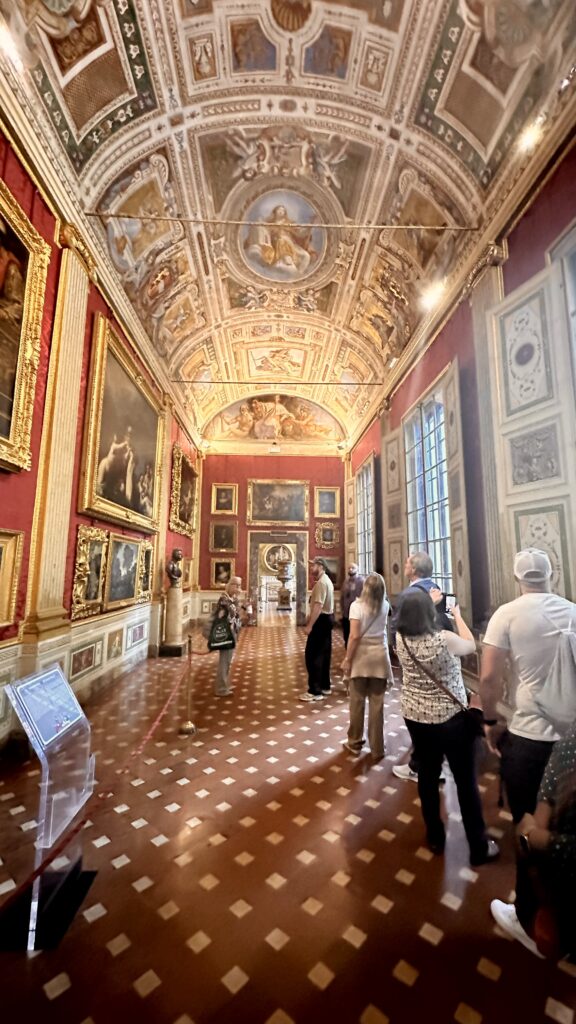
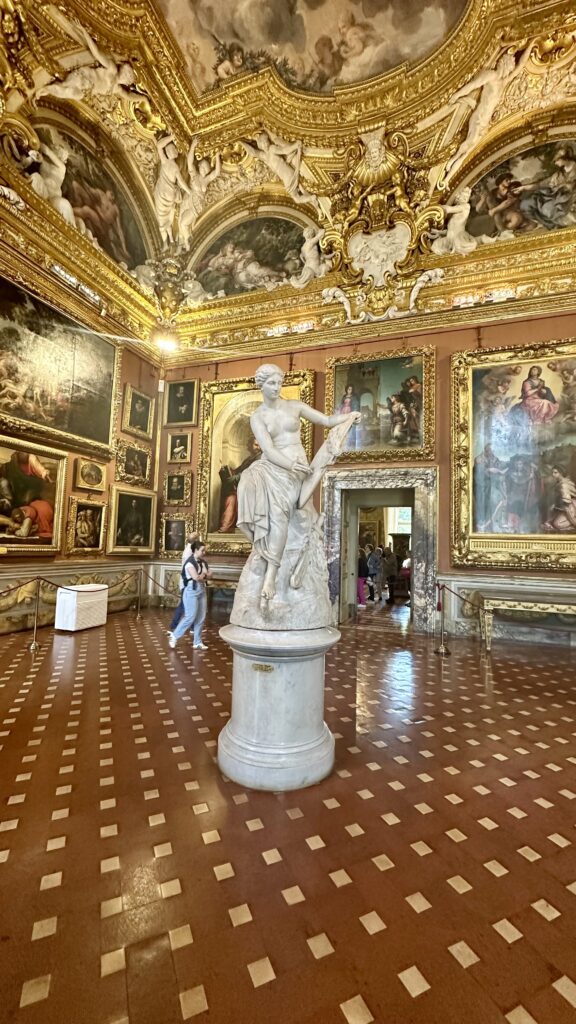
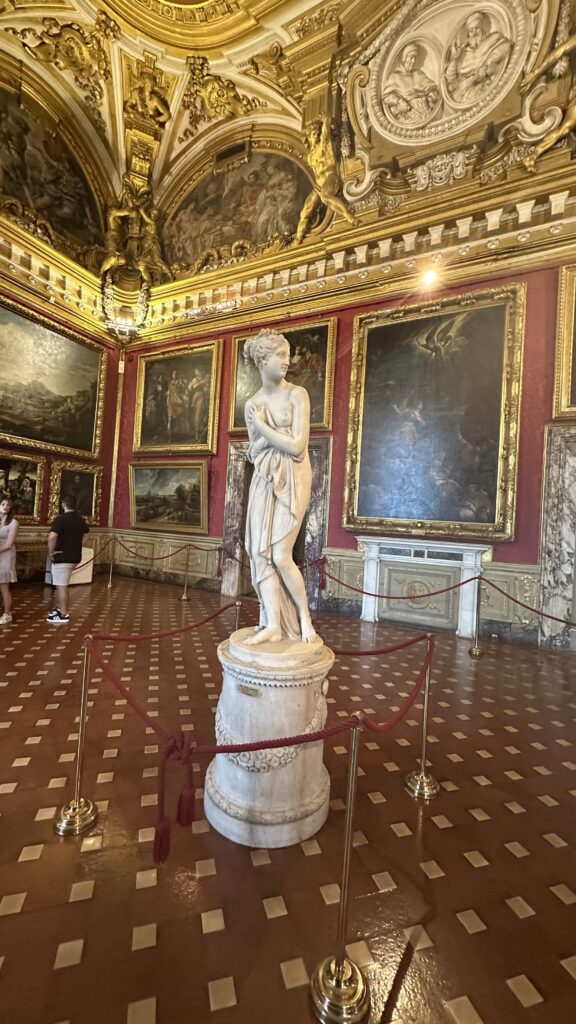
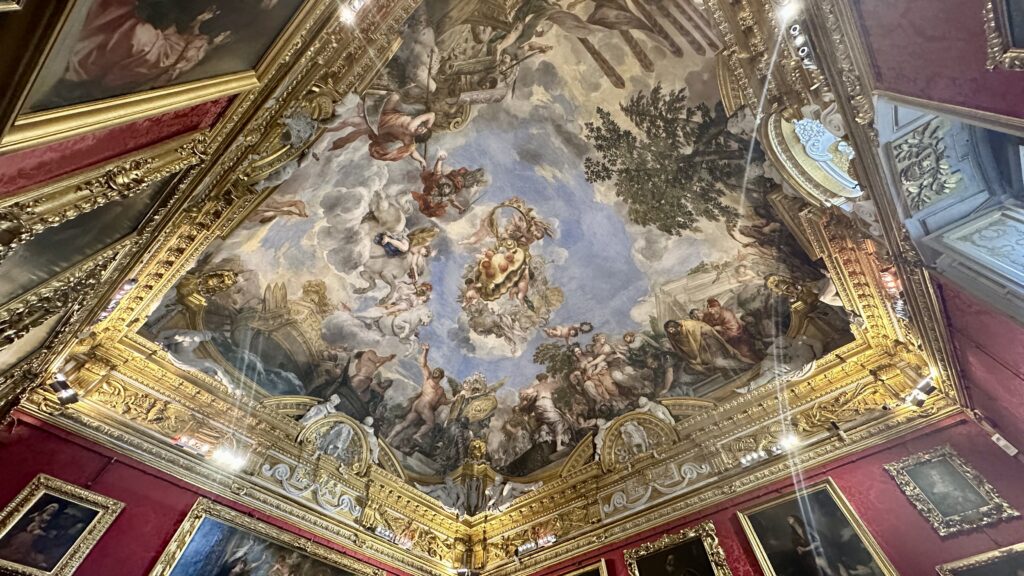
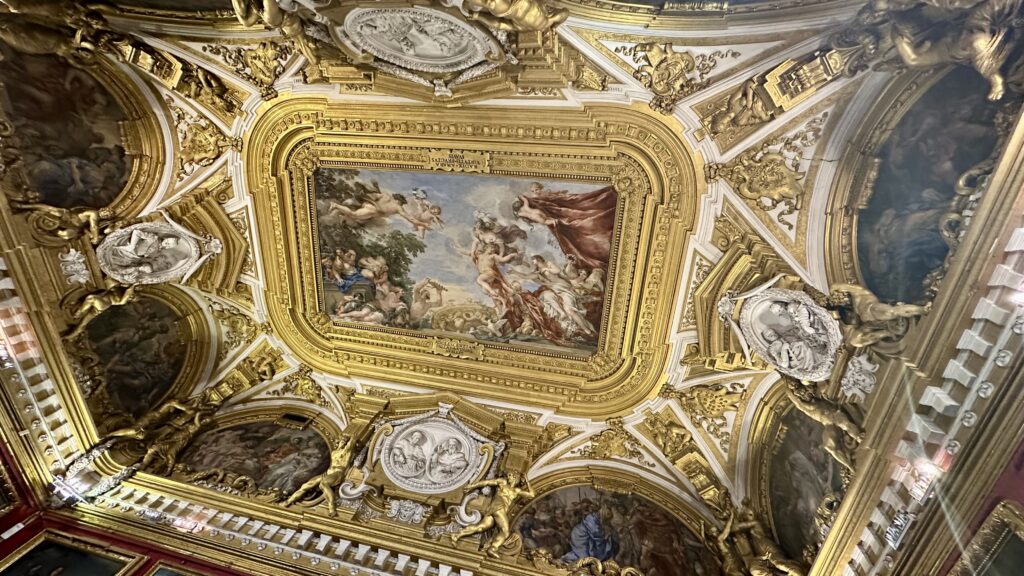
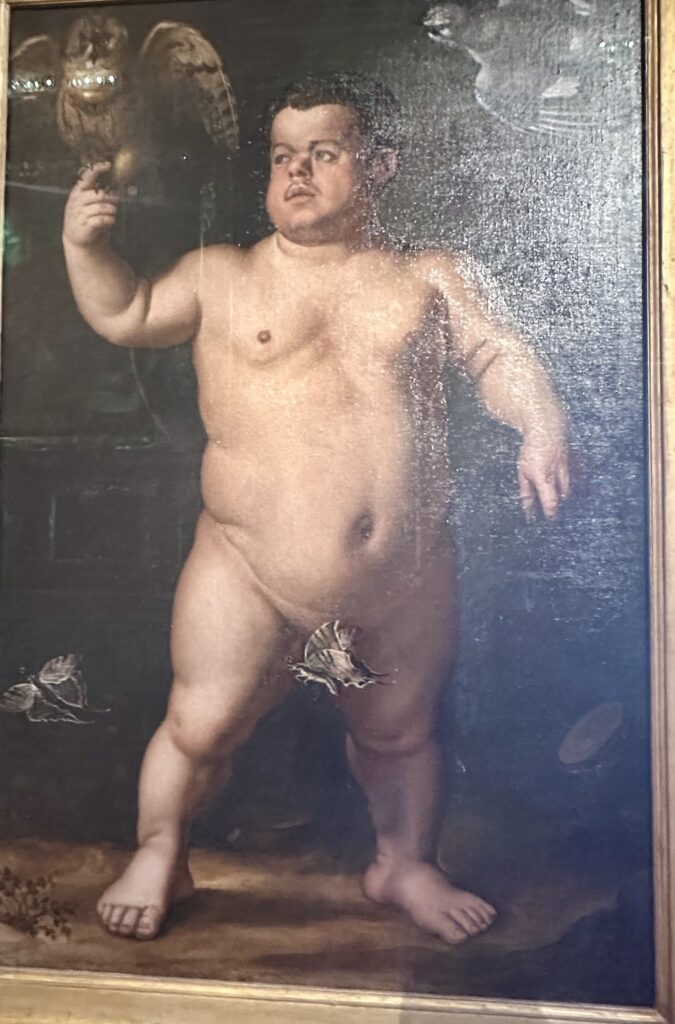
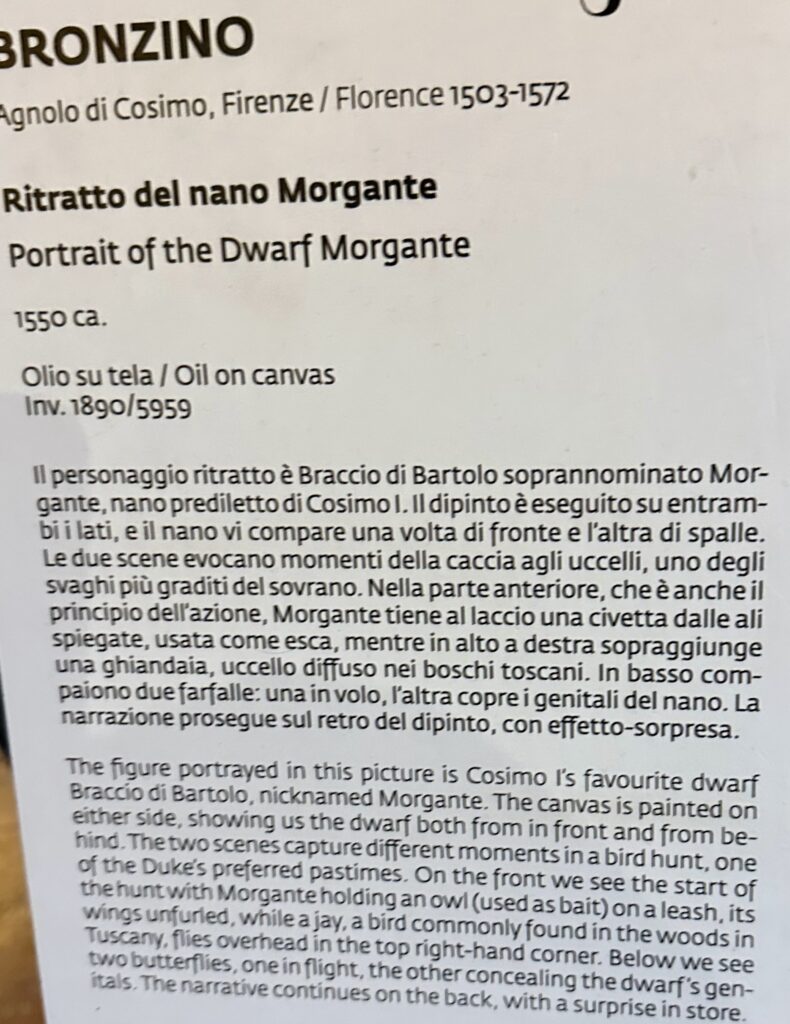
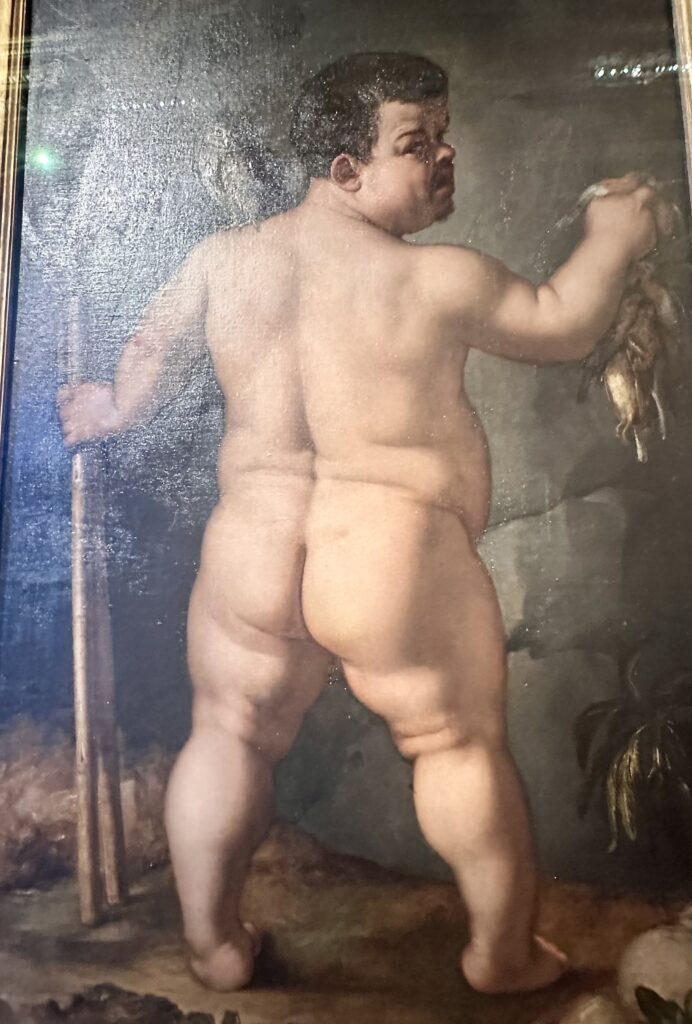
Pitti Palace, Royal Apartments – The Palatine gallery, flows into the royal apartments. The Room of Niches, a large hall, divides the Palatine Gallery and the Royal Apartments. The room is part of the oldest section of the palace and was redecorated in the late 18th century.
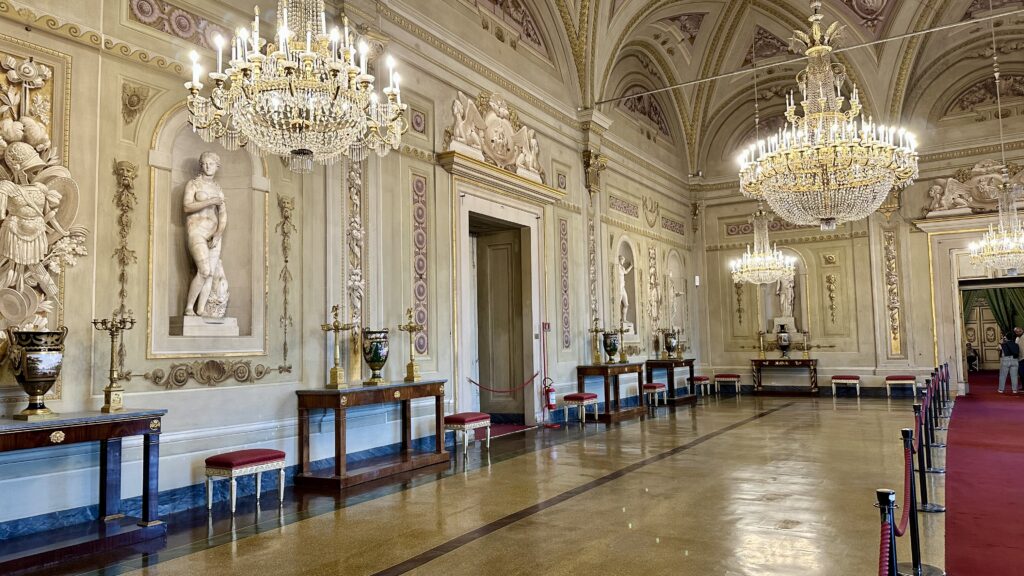
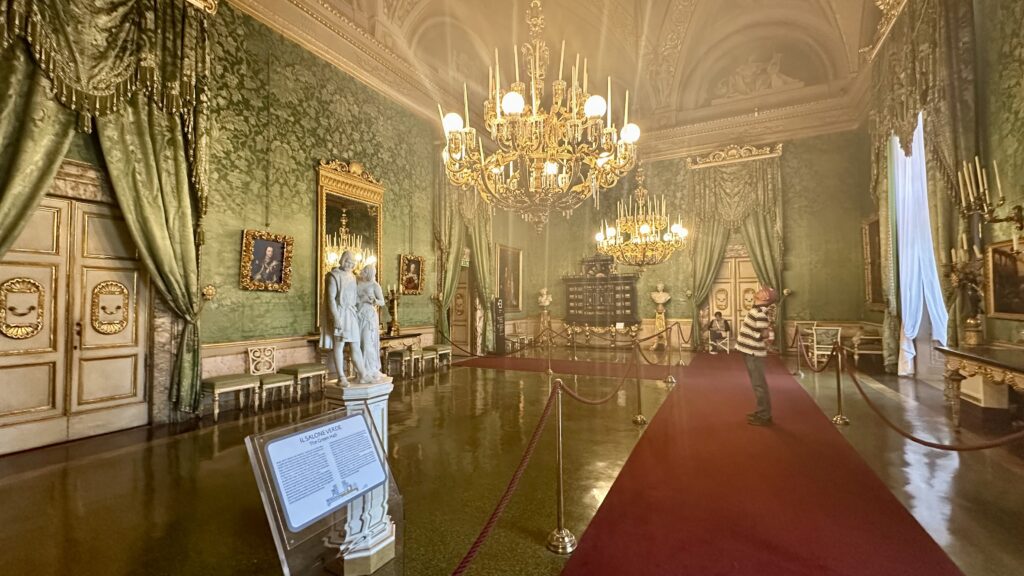
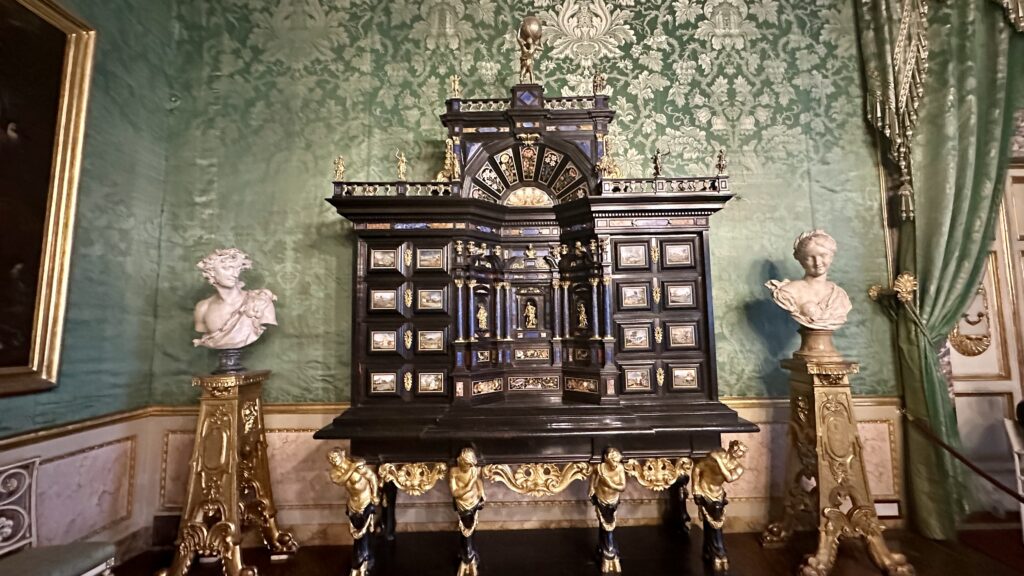
Pitti Palace, Costume Gallery – Situated in a wing known as the Palazzina della Meridiana, this gallery contains a collection of dresses and theatrical costumes dating from the 16th century until the present. In addition to theatrical costumes, the gallery displays garments worn between the 18th century and the present day.
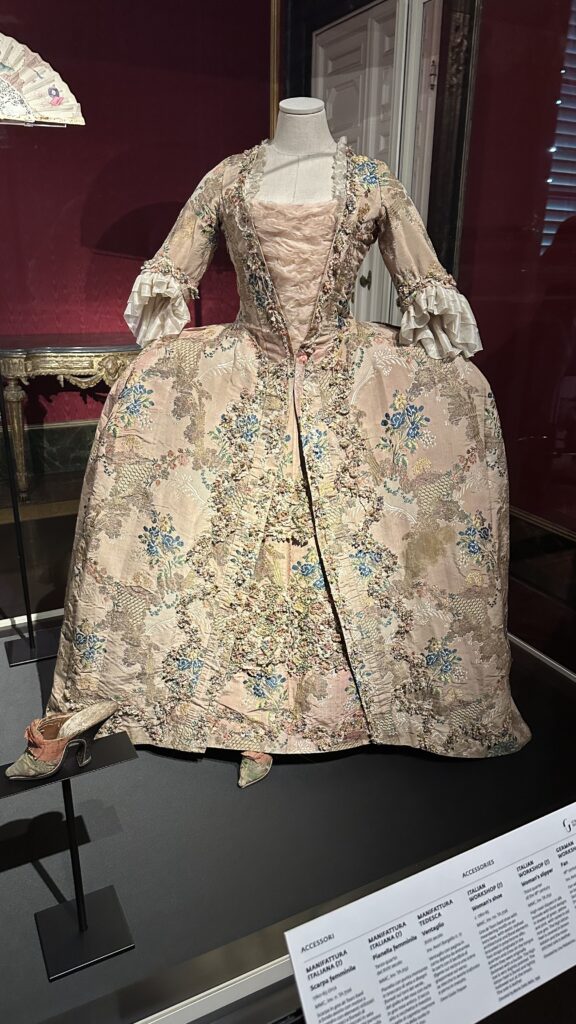
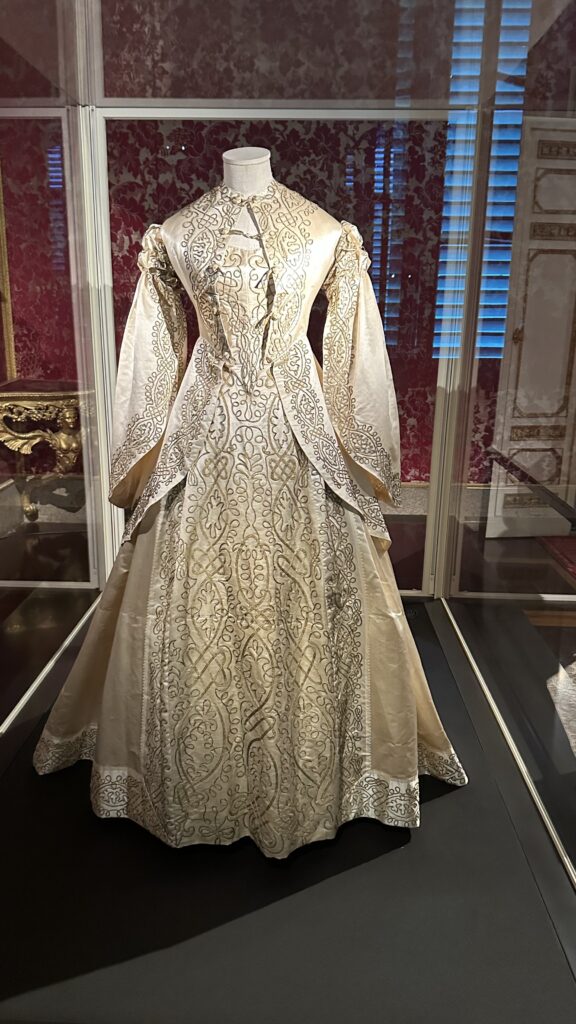
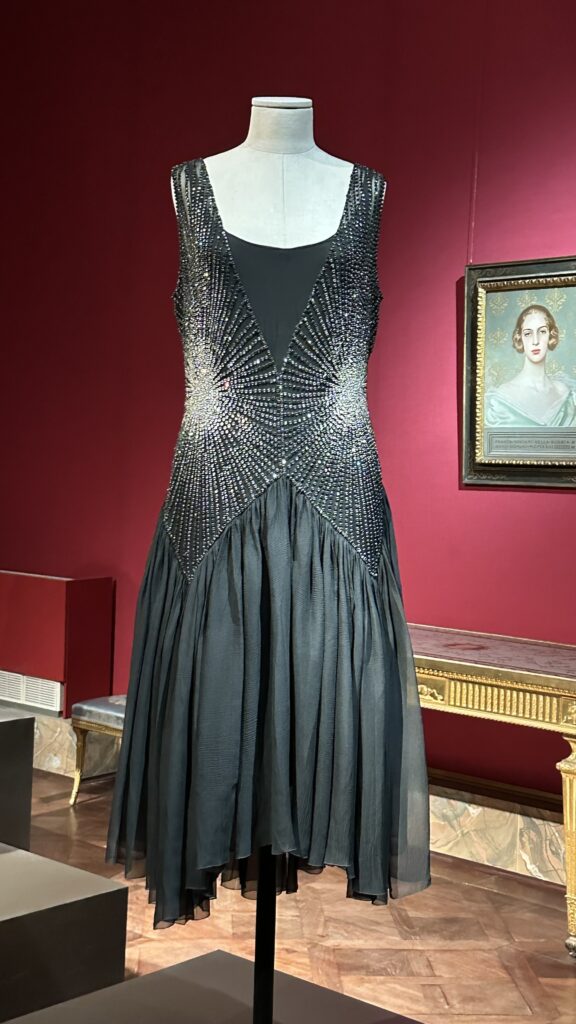
Pitti Palace, Treasury of the Grand Dukes – Located on the ground floor of the palace, you will first enter the Salone di Giovanni da San Giovanni which is a large reception and banquet hall named after the painter who worked on its elaborate fresco decorations. Giovanni da San Giovanni started the work in 1634, but his pupils finished it between 1636 and 1642. The frescoes were commissioned to commemorate the marriage of Ferdinando II de’ Medici and Vittoria della Rovere in 1637.
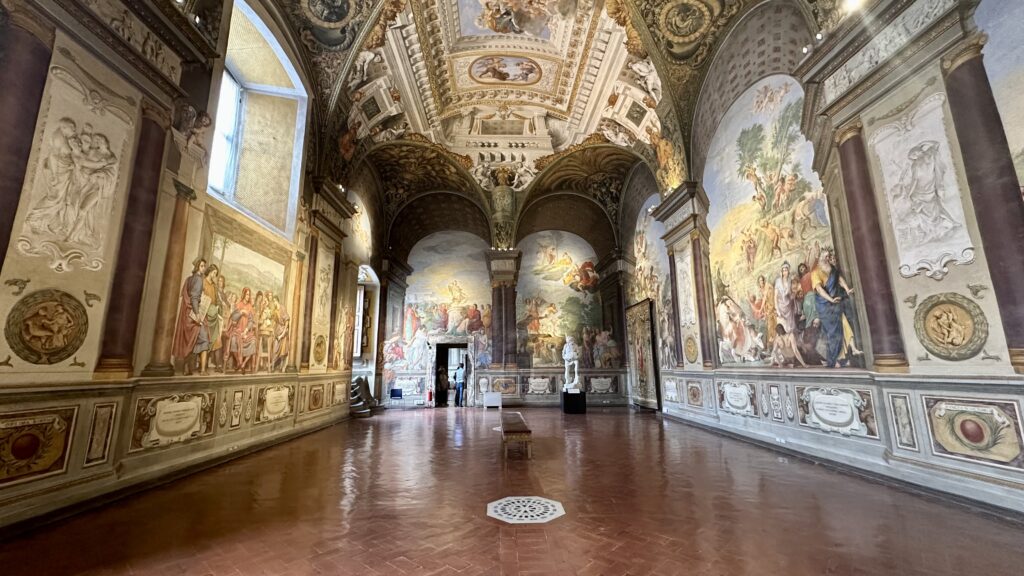
Some of the displays in these rooms include gold and silver objects, cabinets inlaid with precious stones etc.
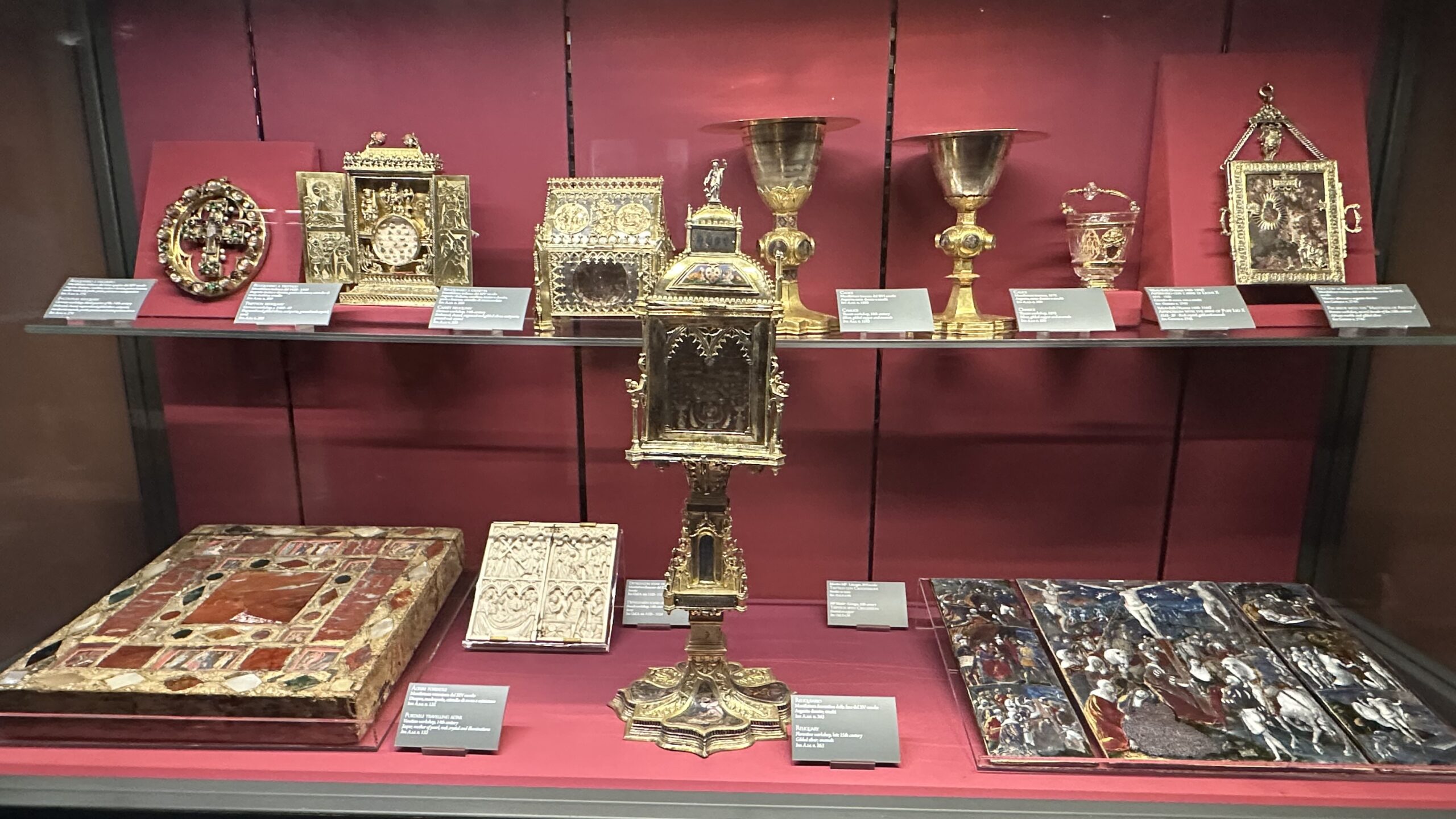
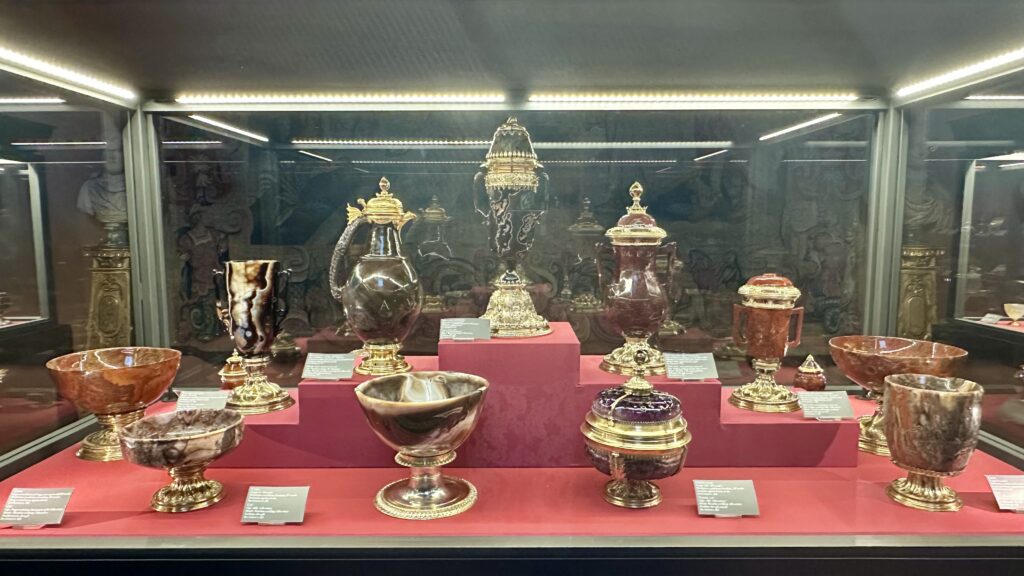
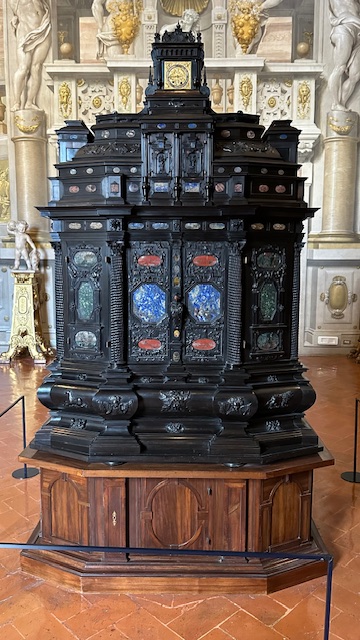
Boboli Gardens – The garden sits behind the Pitti Palace and was laid out for Eleonora di Toledo, the wife of Cosimo I de’ Medici (The 2nd Duke of Florence). Plan on spending 1-2 hours here depending on how much of the garden you want to see and there is a lot of uphill walking. The garden does not have too many flowers just lot of greenery with trees and well maintained grass and a few Renaissance statues and fountains. We enjoyed the walk.
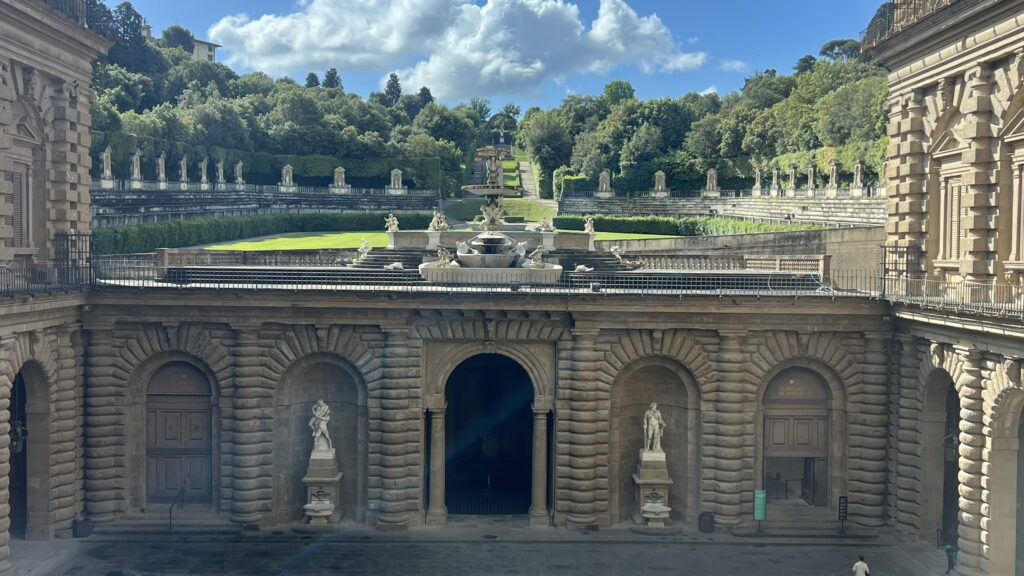
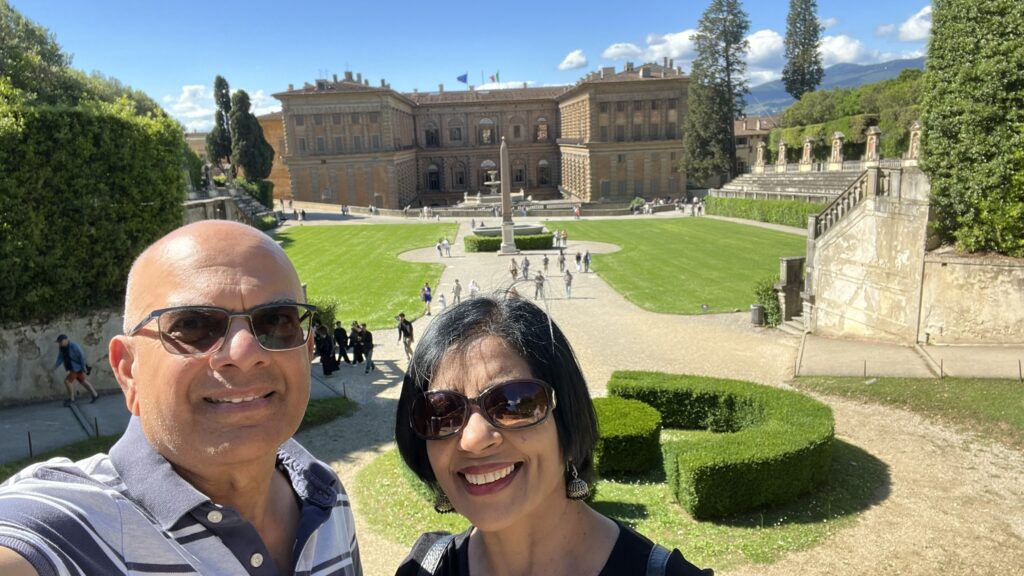
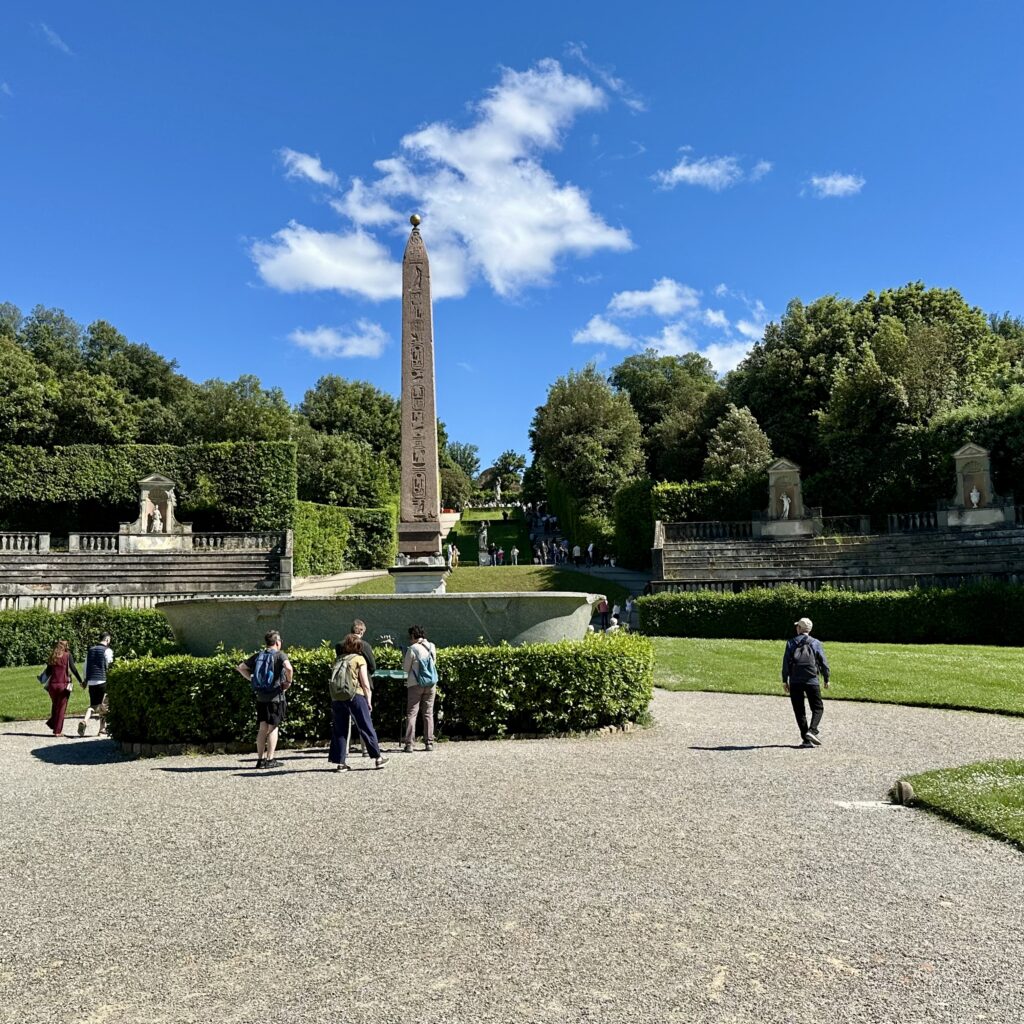
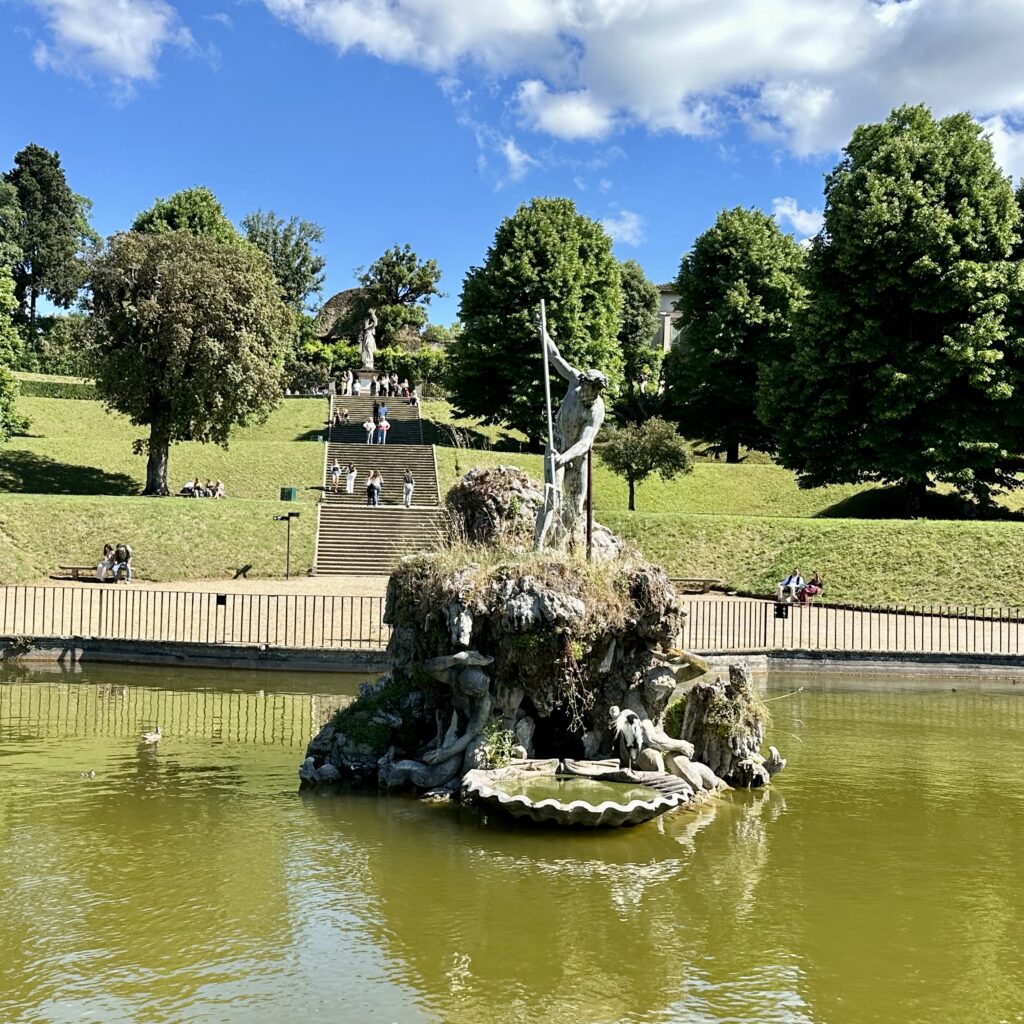
Piazzale Michelangelo – This plaza was built in 1869 by Florentine architect Giuseppe Poggi, as part of major restructuring of the city walls. It has one of the best viewpoints of Florence, and is filled with tourists, vendors, and a bronze replica of Michelangelo’s David. A word of caution – although this place is great to view the sunset, during peak season (May-Oct), it gets overcrowded with thousands of people. If all you want, is to get a view of Florence from the top, you should visit this place before 4pm.
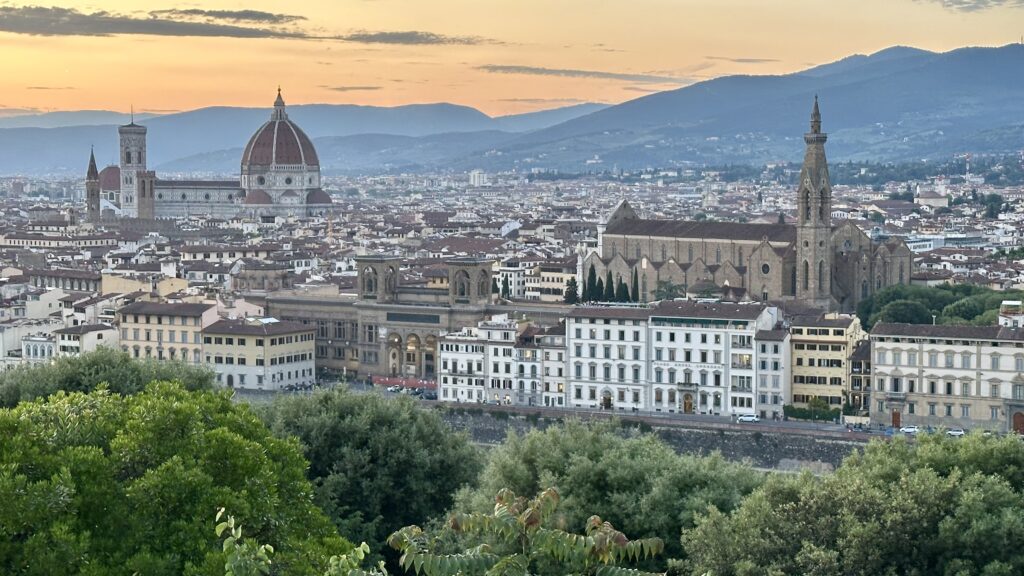
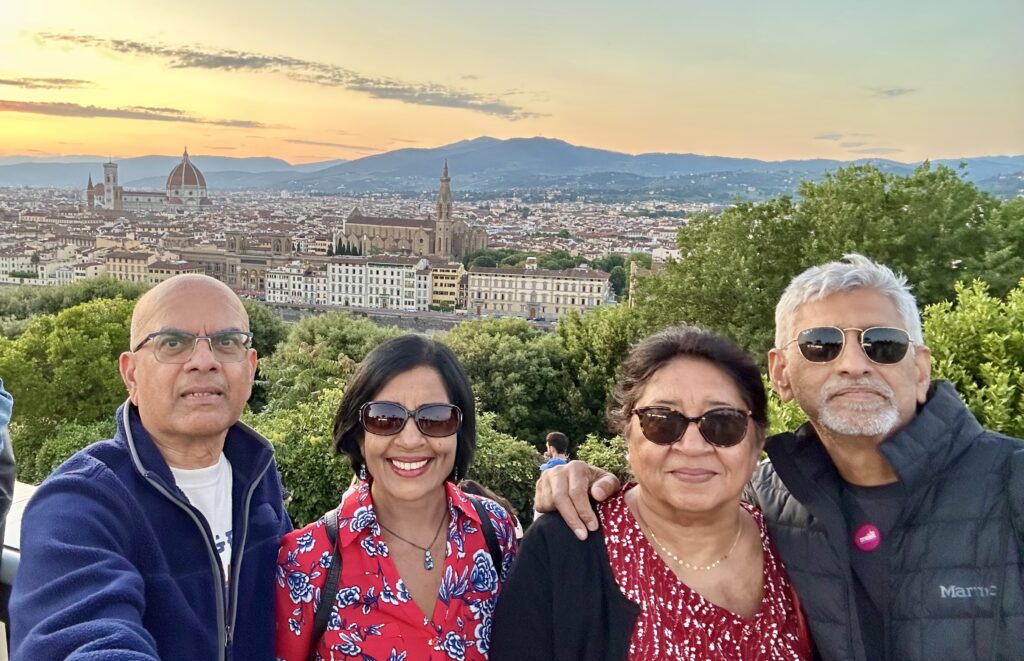
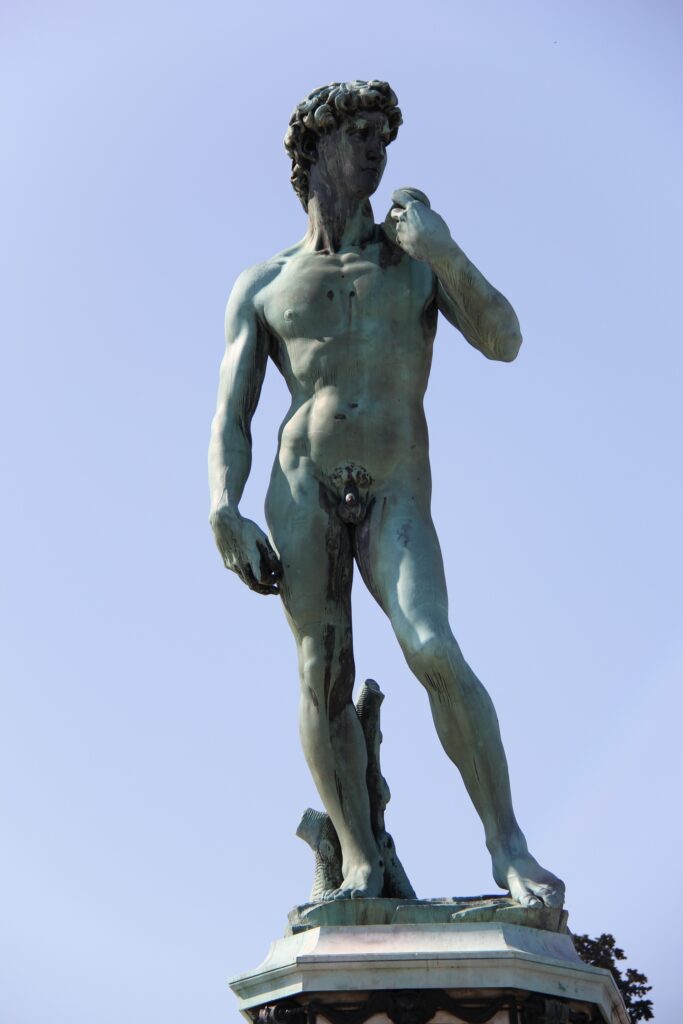
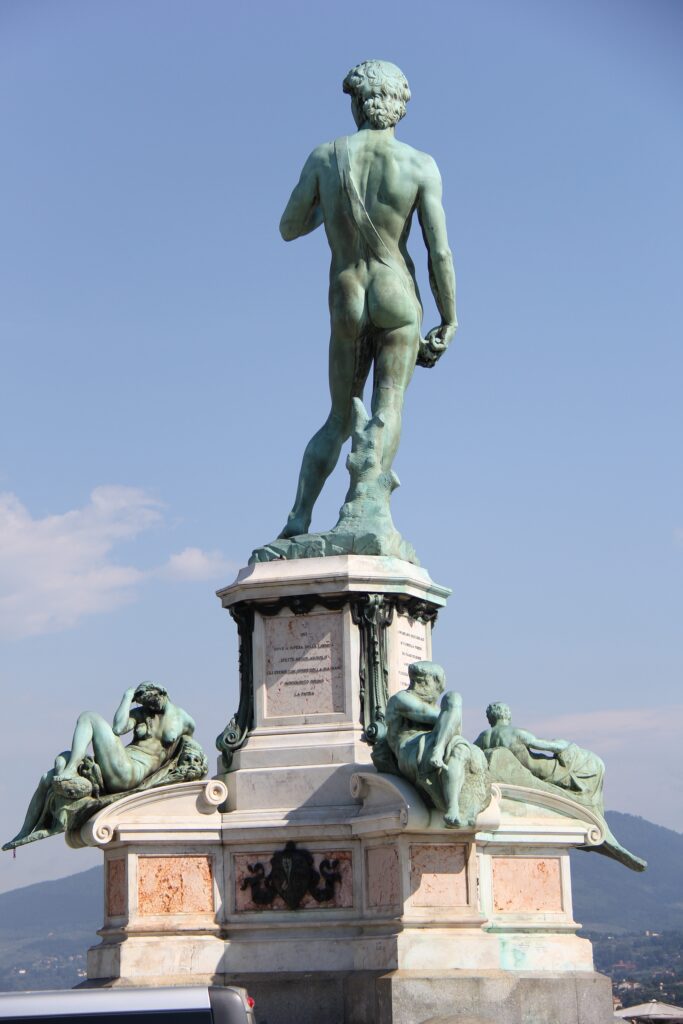
Porta San Niccolo – also called the Tower of San Niccolo, it is one of the remains of the defensive walls of Florence. As it is located within walking distance of Piazzale Michelangelo, you can stop at this place on the way up. It is possible to go to top of the tower on a guided tour from end of June to end of Sept. It was closed during our visit at the end of May.
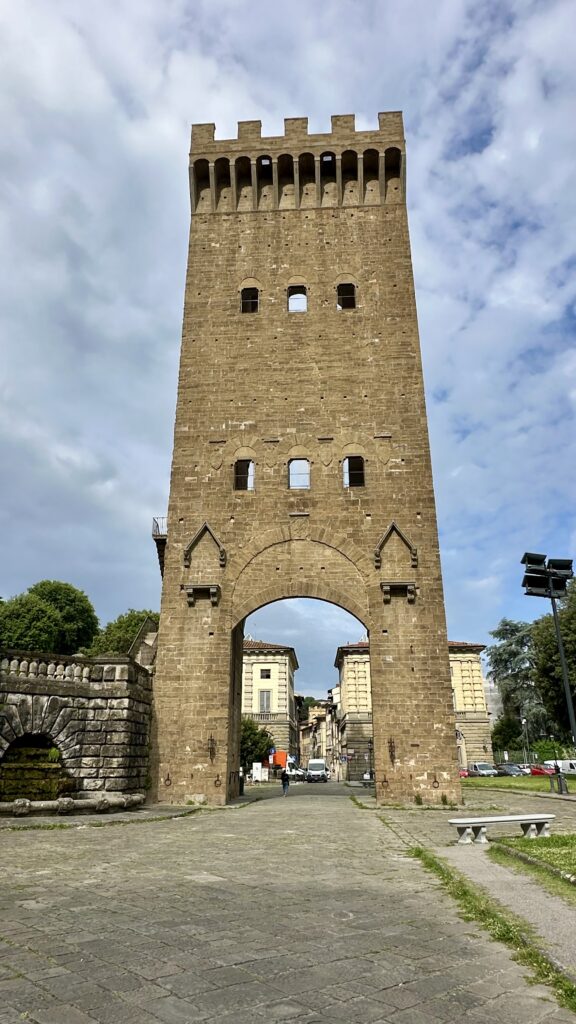
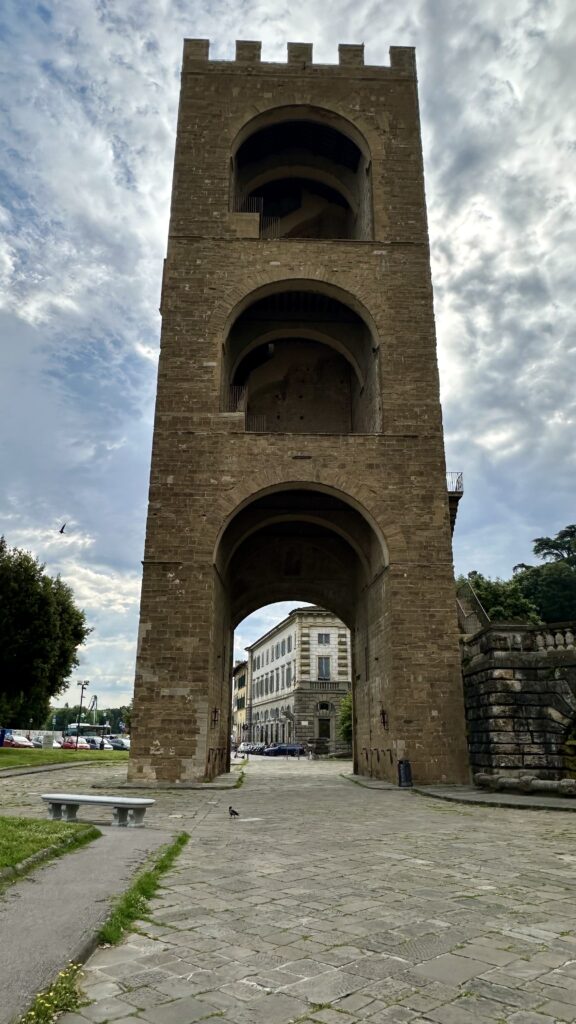
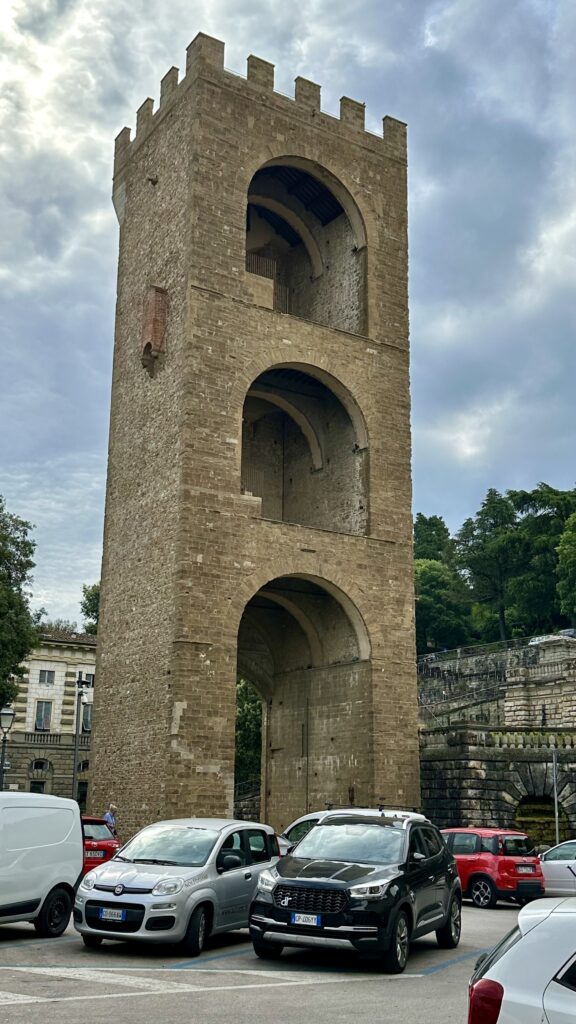
There is a Rose Garden which is free to visit located on a hillside, above Porta San Niccolò and just below Piazzale Michelangelo.
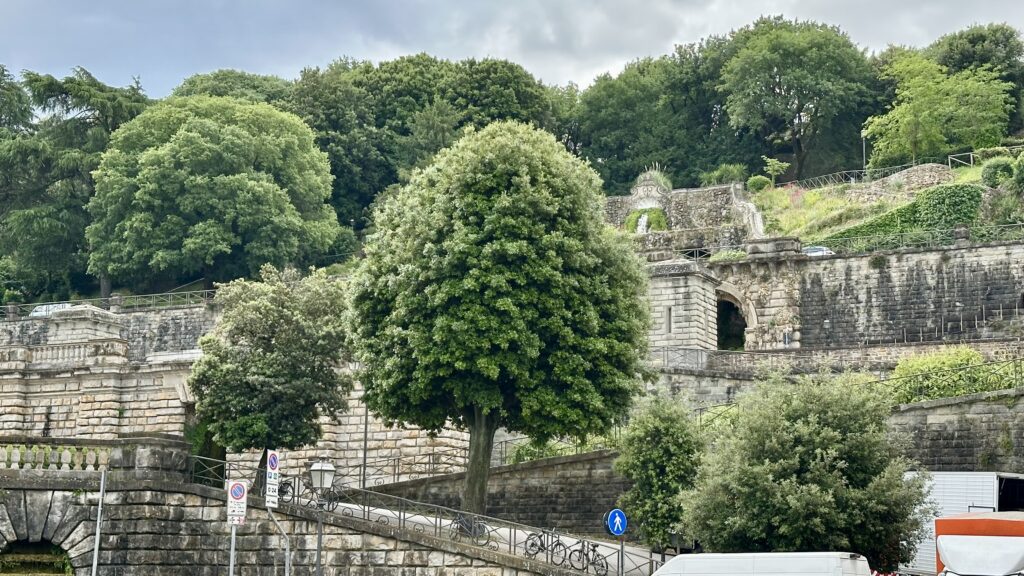
Loggia del Mercato Nuovo – Inside this semi-enclosed hall, vendors sell leather goods and t-shirts. Florentines also call this market ‘Mercato del Porcellino’, or piglet market, for the wild boar statue that is located here. Our Airbnb was directly opposite this building.
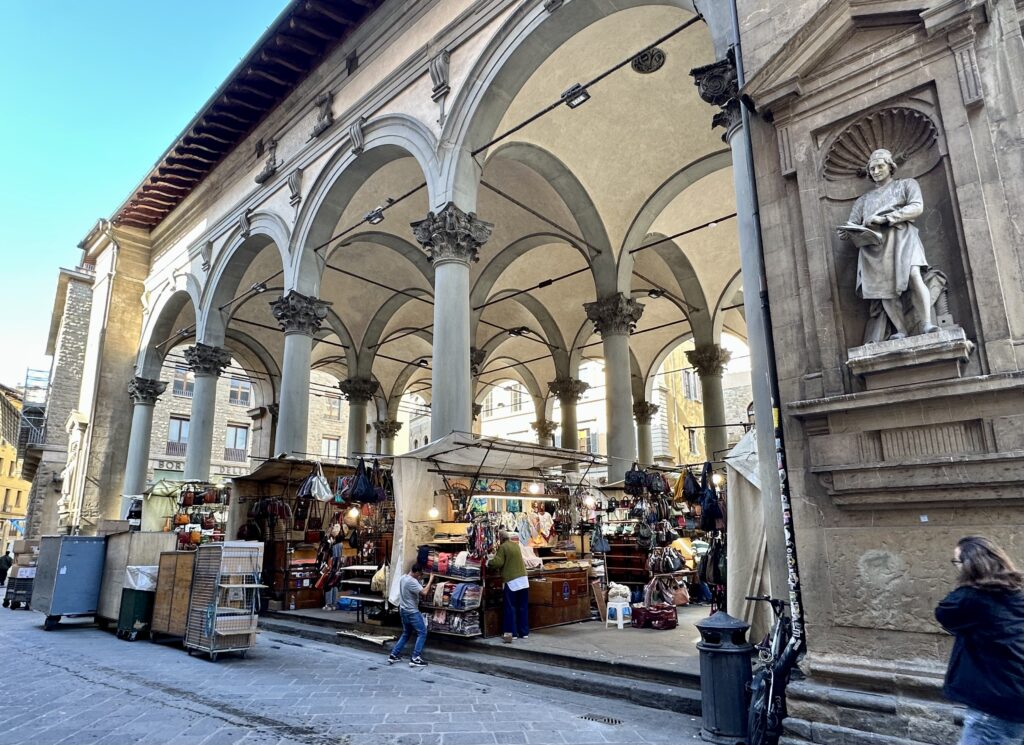
Churches of Florence – While most churches in Florence are free to enter, some charge an entrance fee to help with preservation and maintenance.
The Basilica of Santa Croce (Basilica of the Holy Cross) – Located in Piazza di Santa Croce, it is the burial place of notable italians like Michelangelo, Galileo, Dante Alighieri, Machiavelli, Lorenzo Ghiberti, and the composer Rossini.
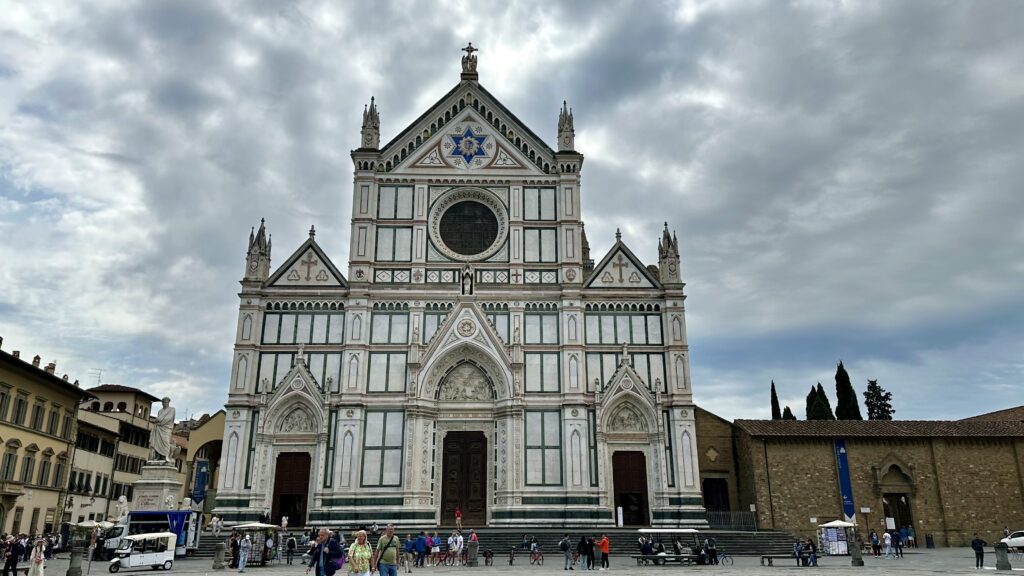
Santa Maria Novella – Situated in Piazza of the same name as the church and opposite the city’s main railway station, it is the city’s principal Dominican church.
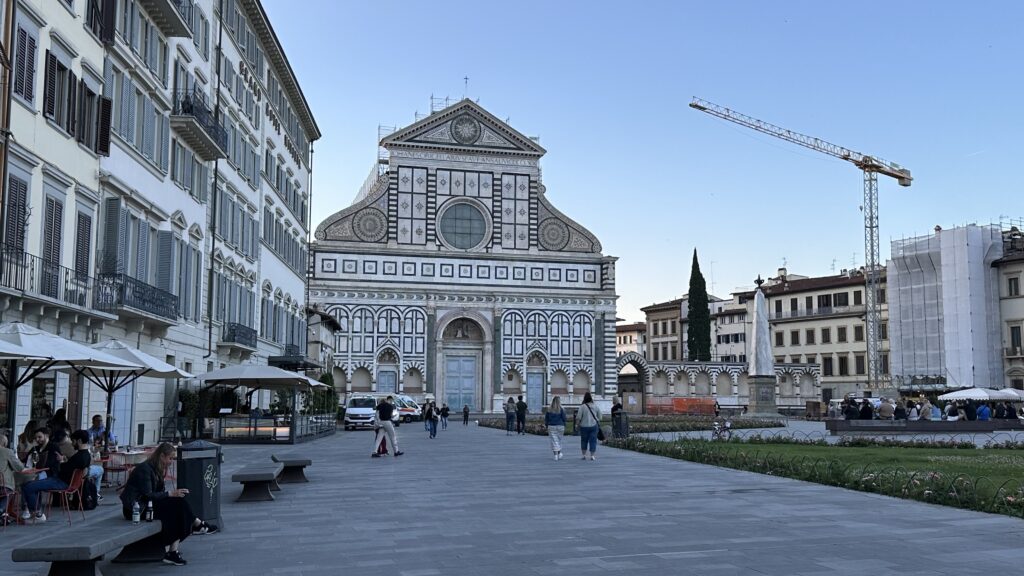
Basilica di San Lorenzo – Some sources state that this is the oldest church in Florence. In 1419, the Medici family financed a new church to be built at this site and Brunelleschi was the principal architect. It became the parish church of the Medici family and many members of the Medici family are buried here. There are numerous works of art inside of the basilica created by Donatello, Michelangelo, and Fiorentino.
